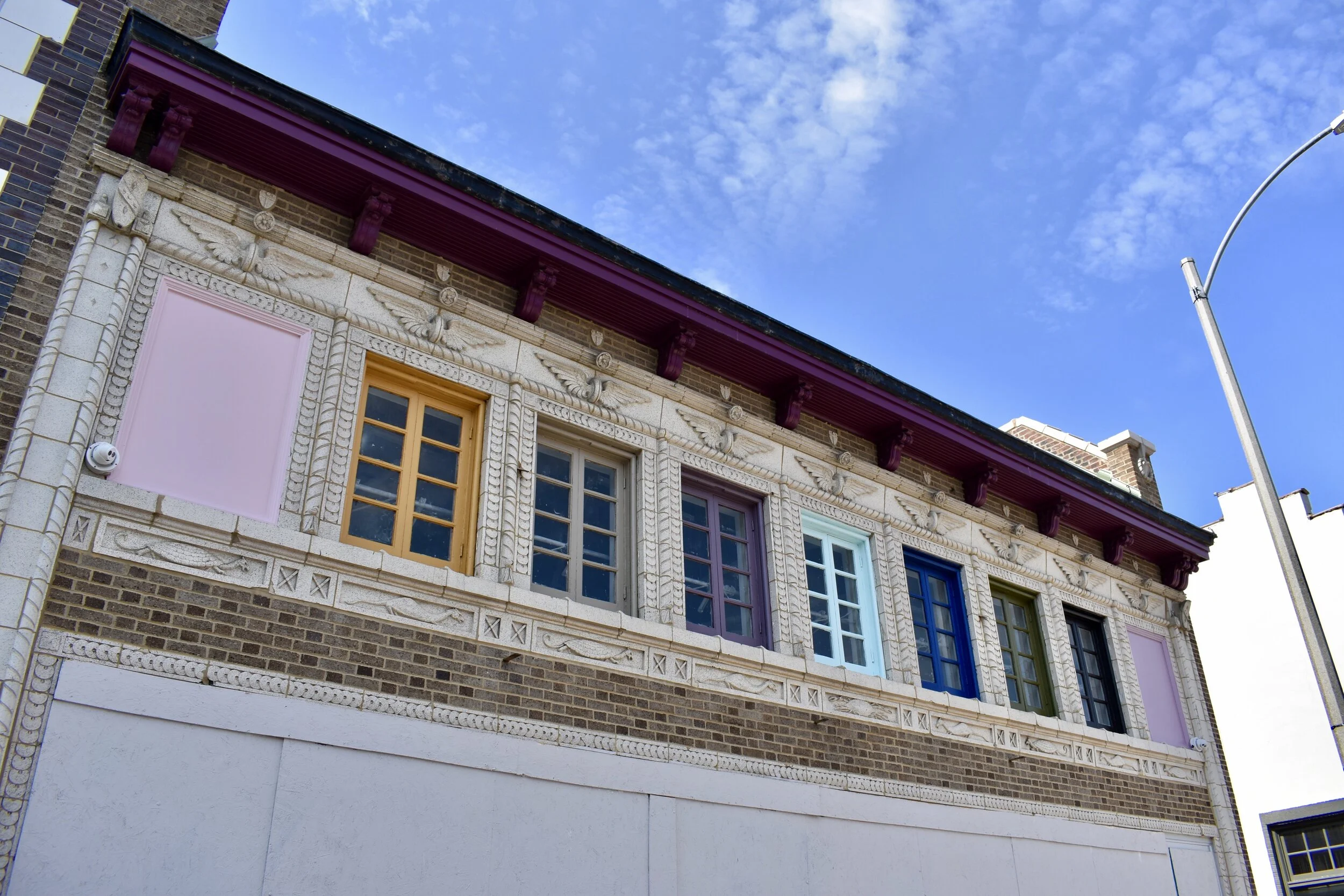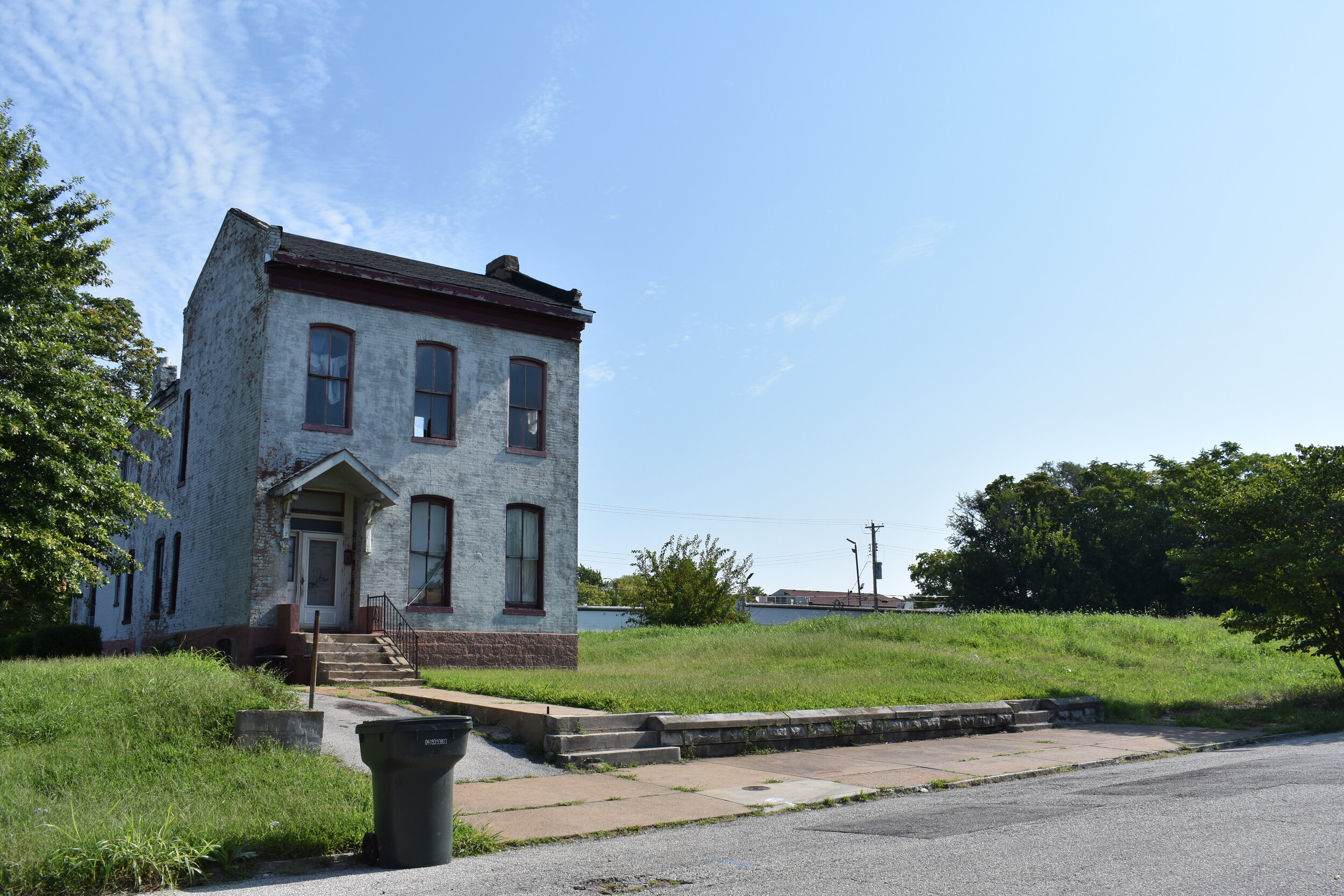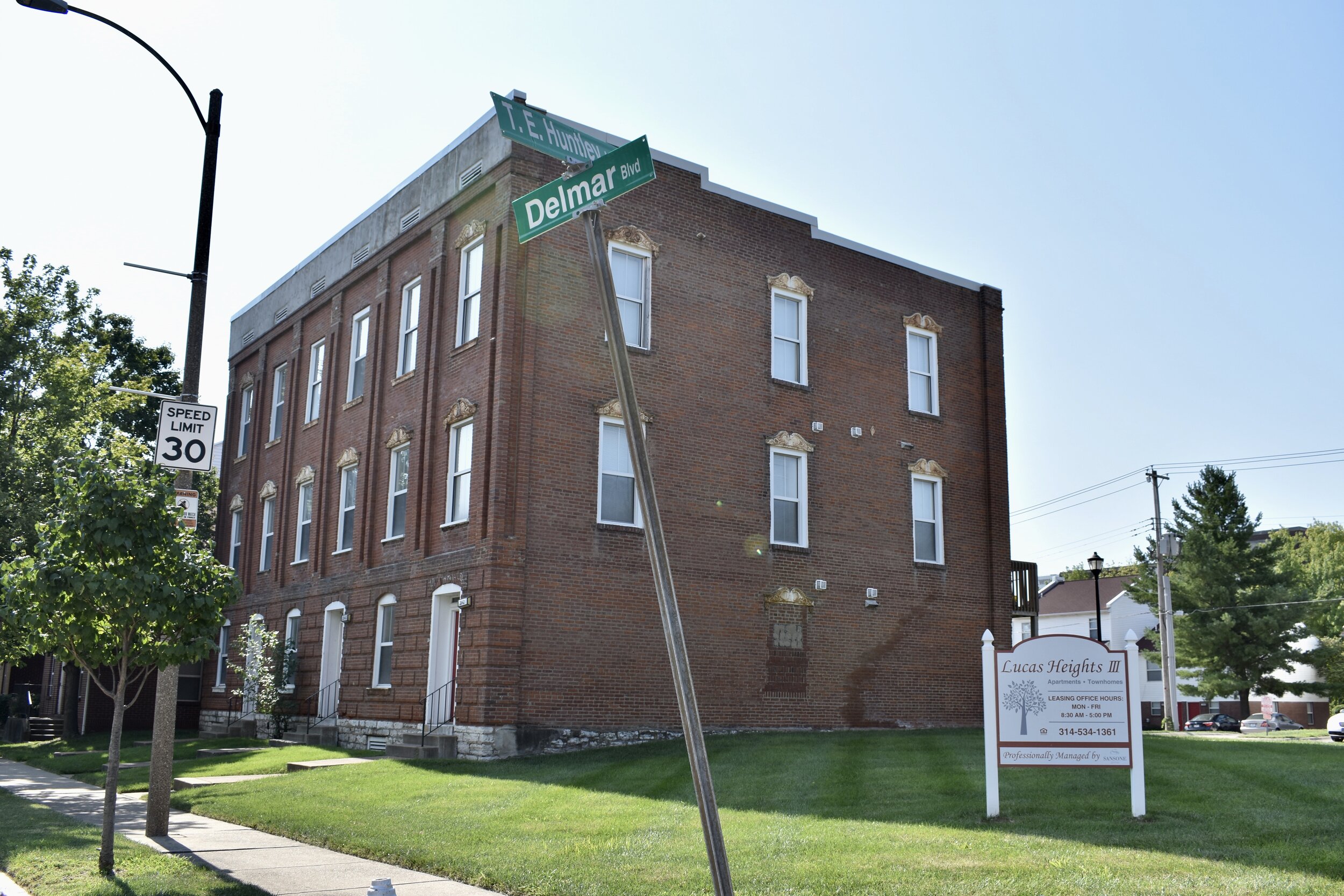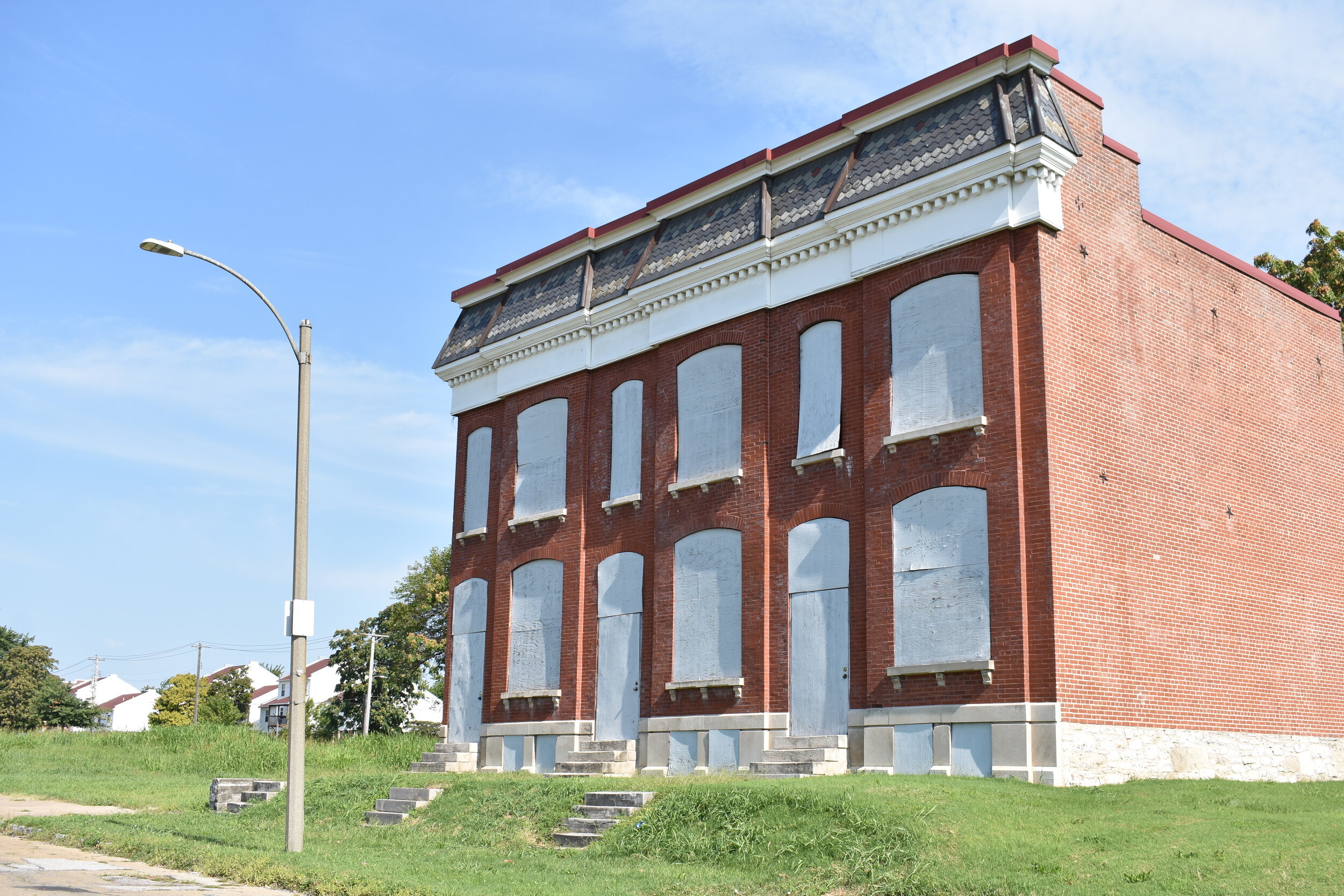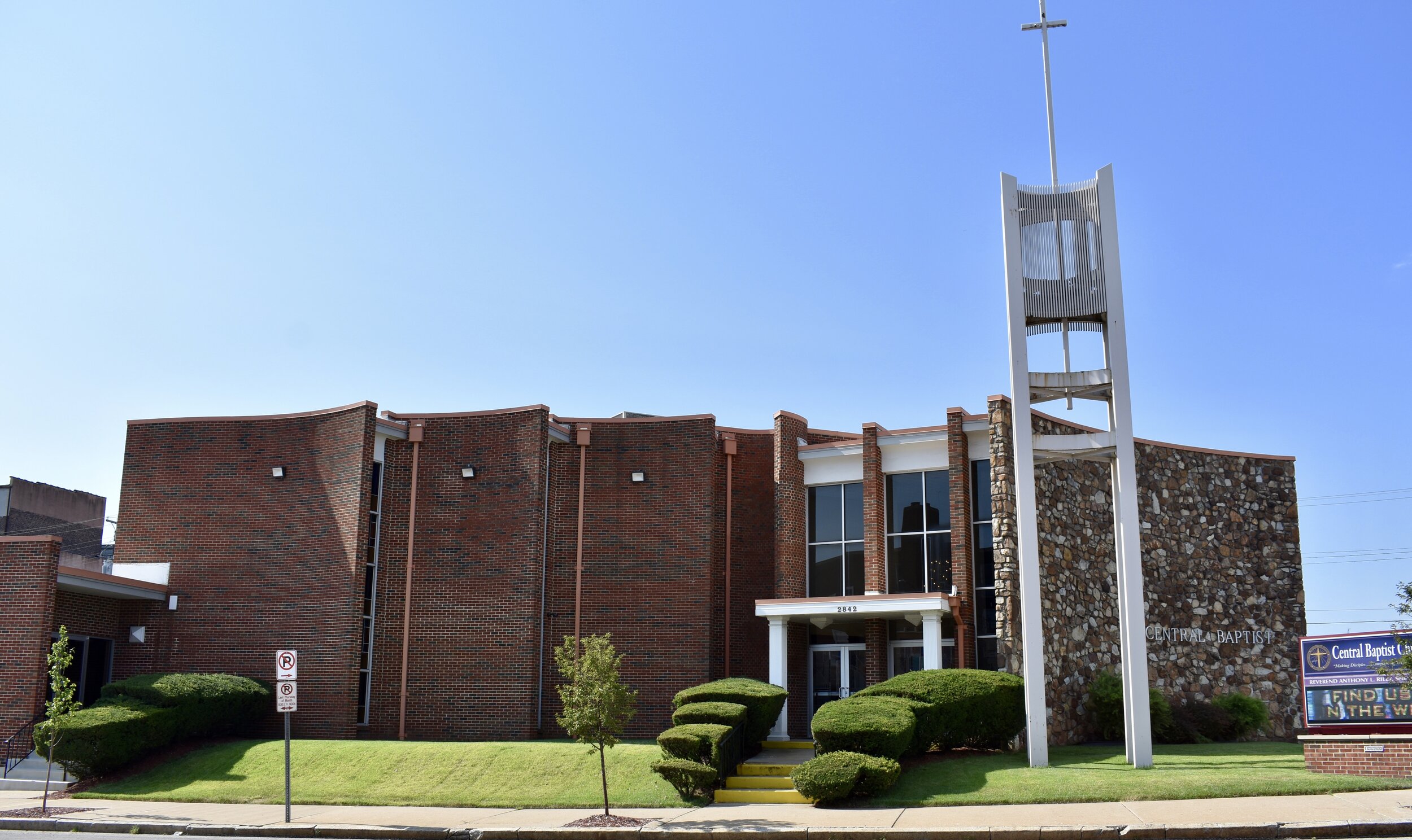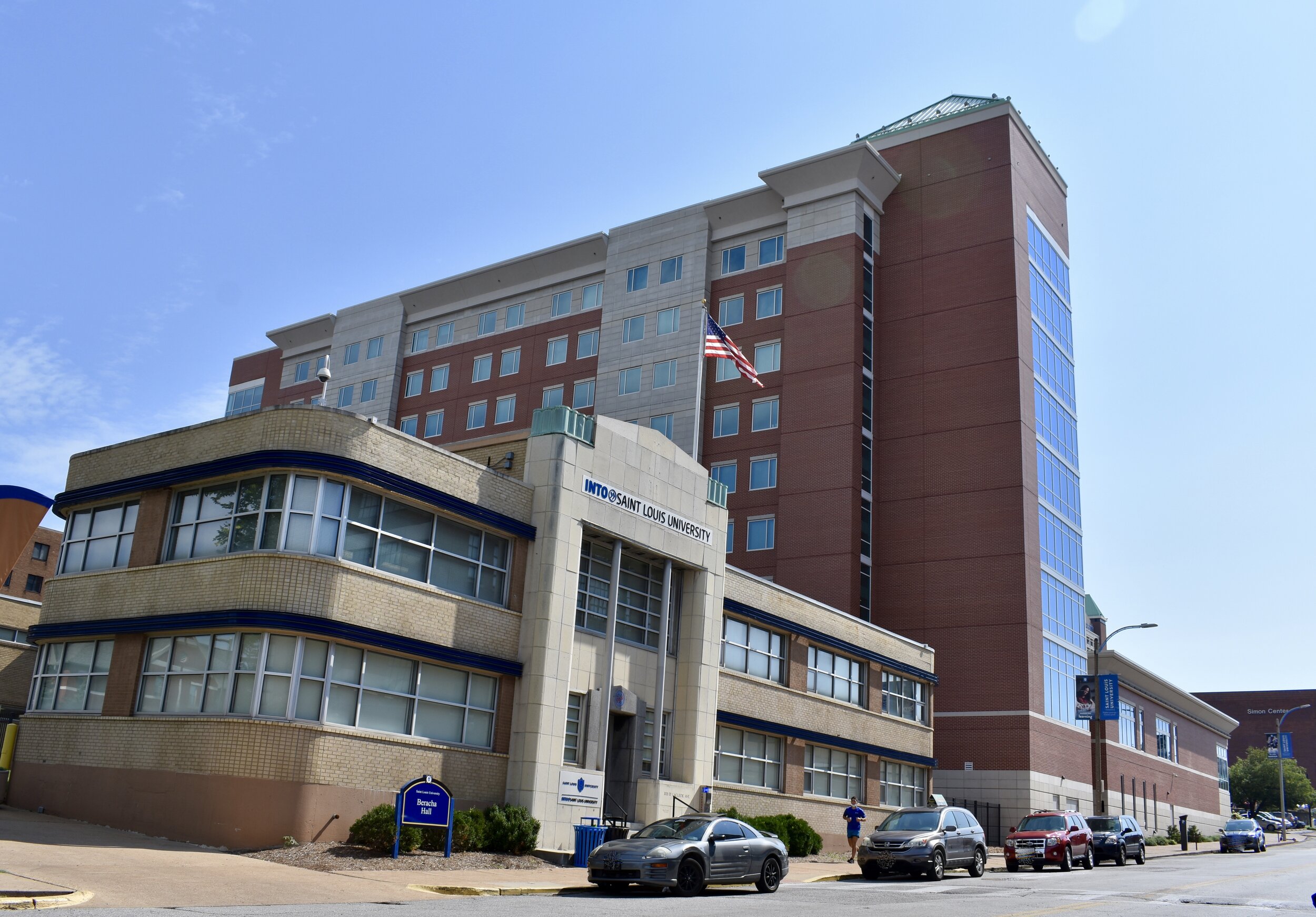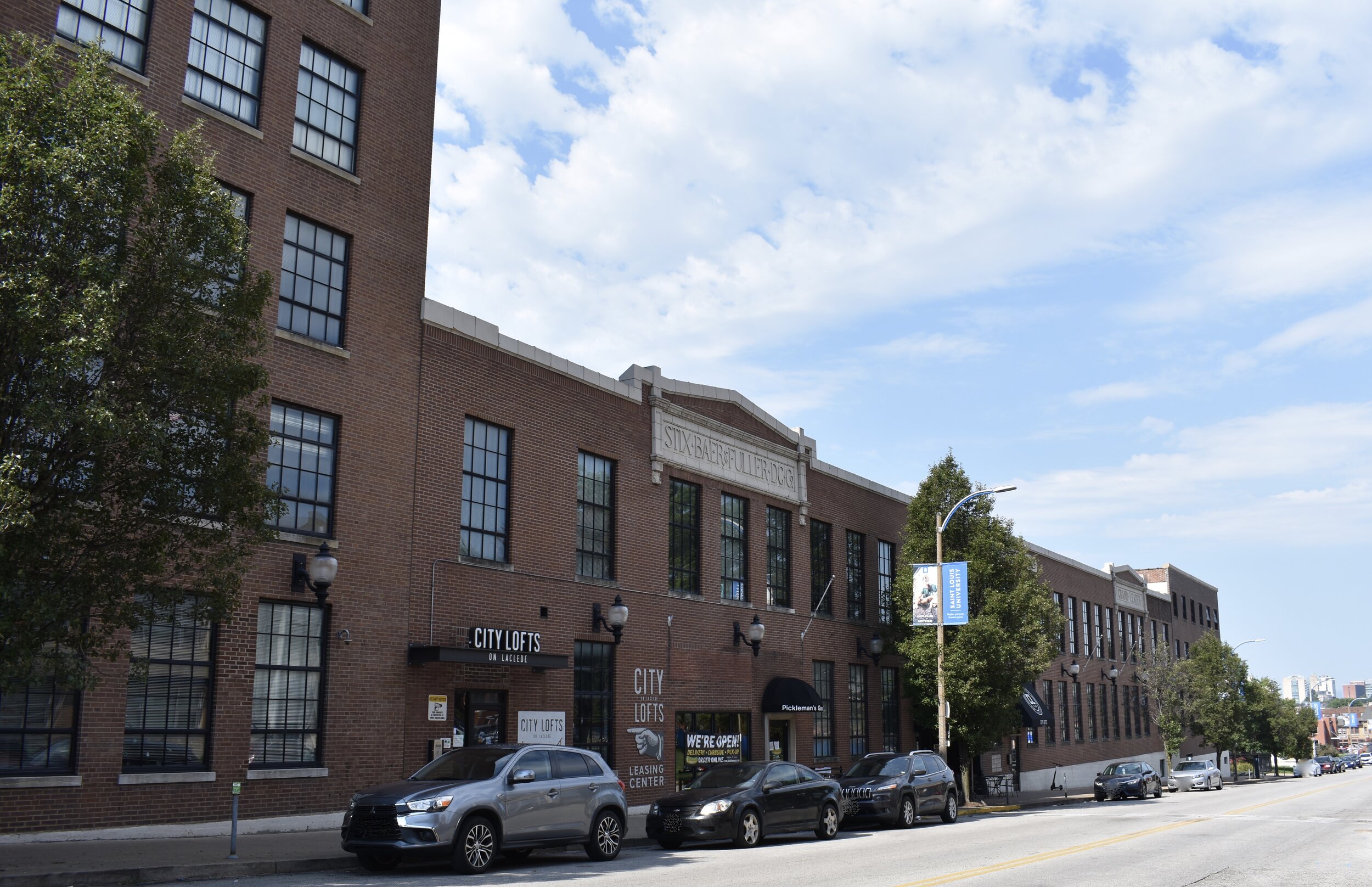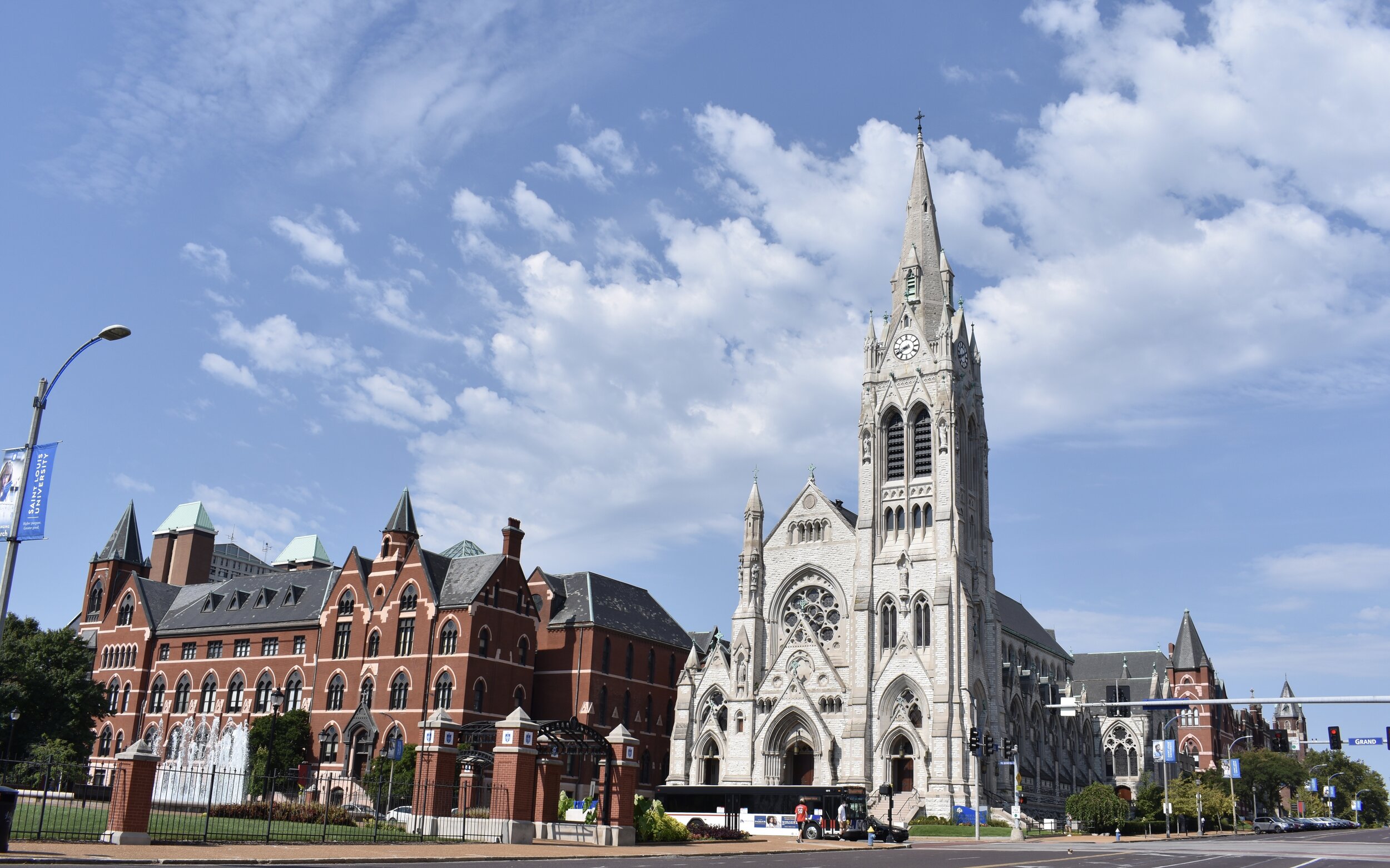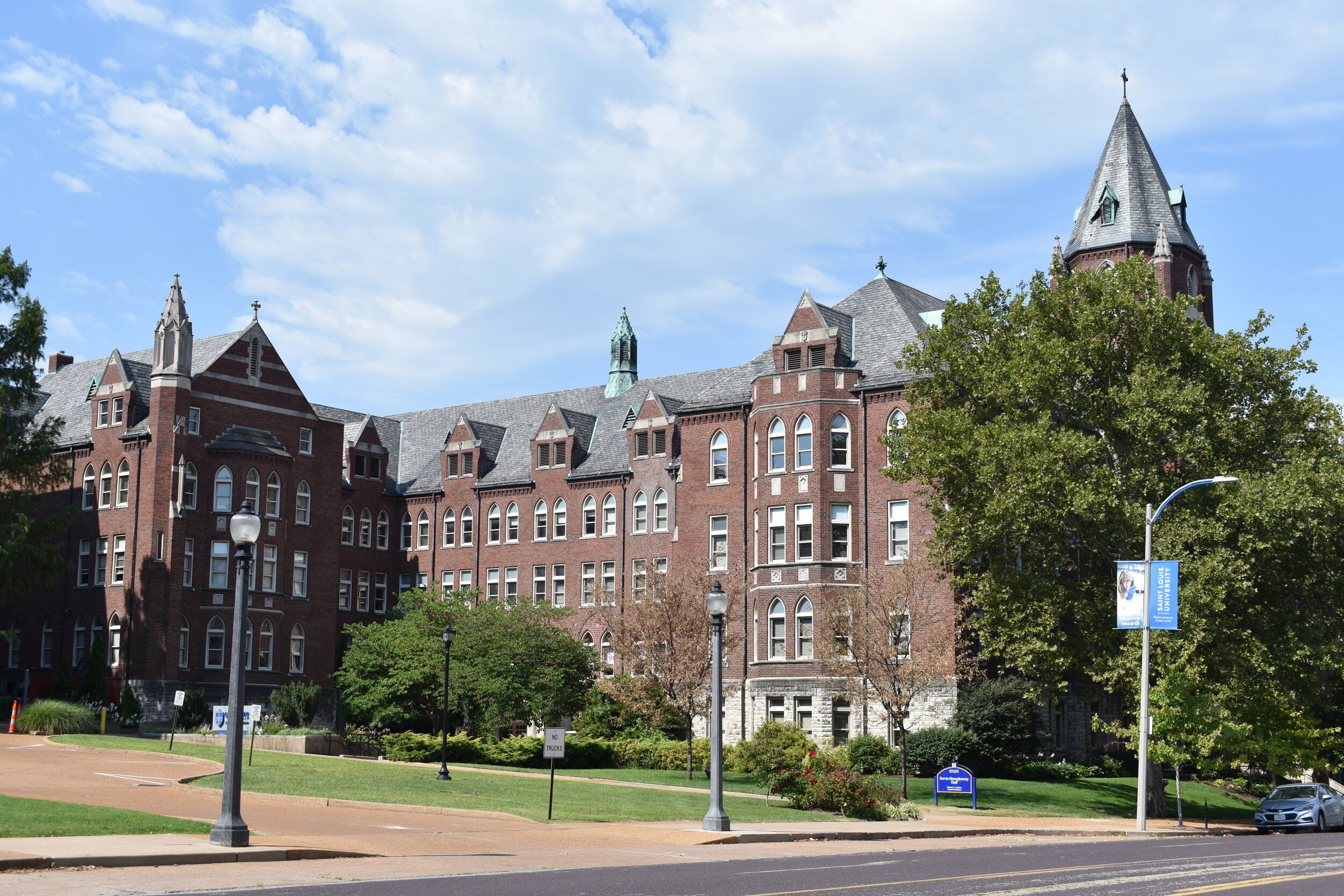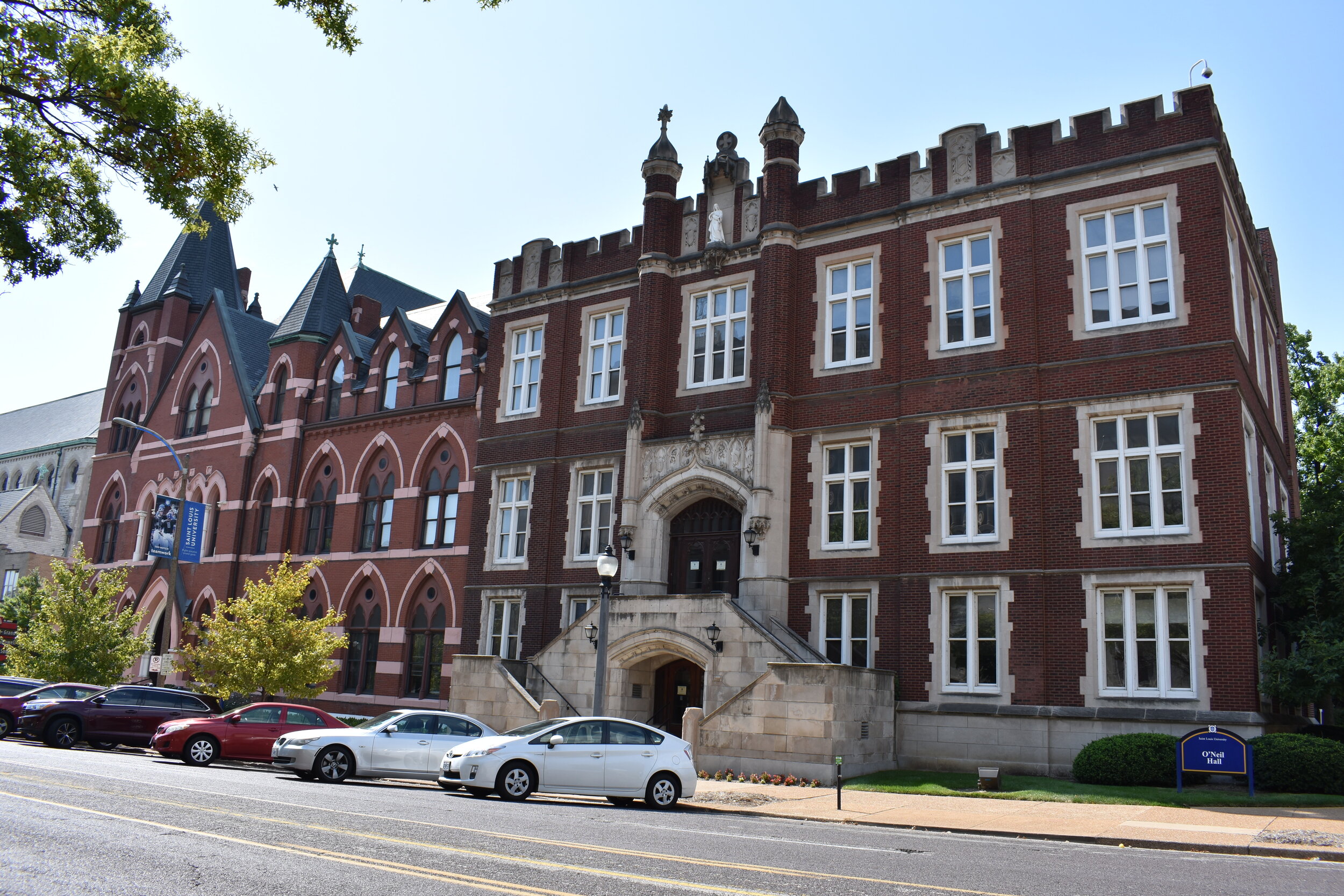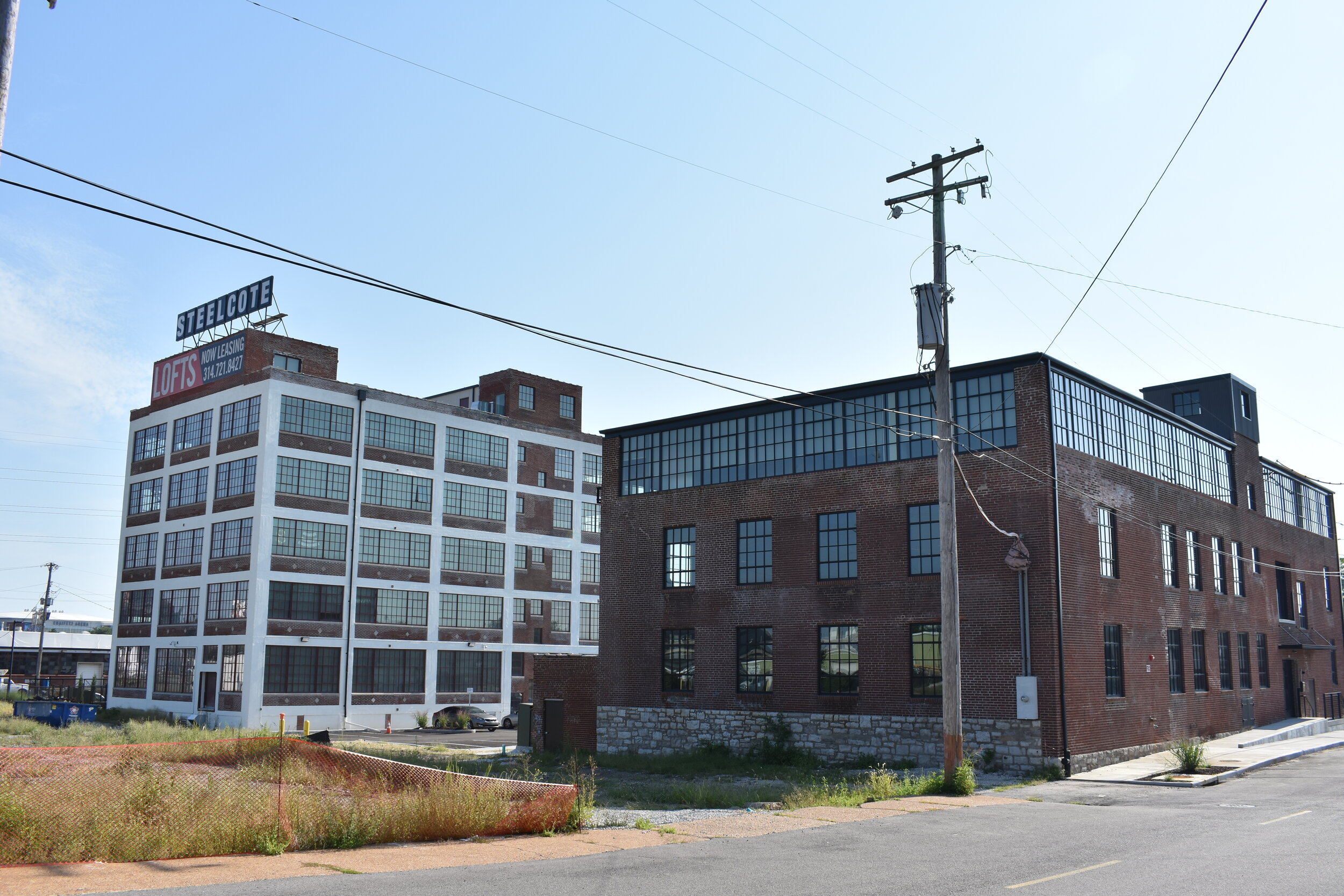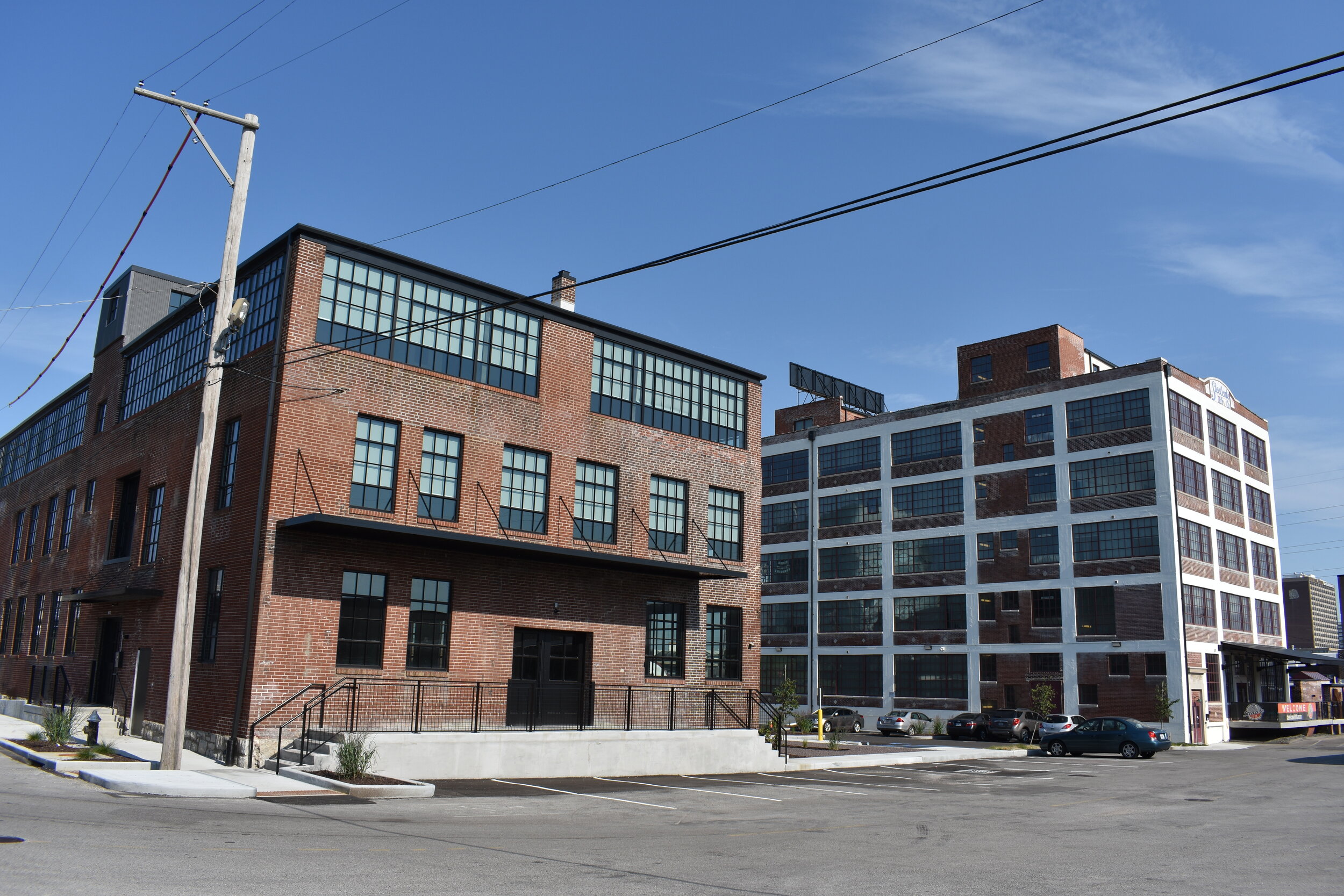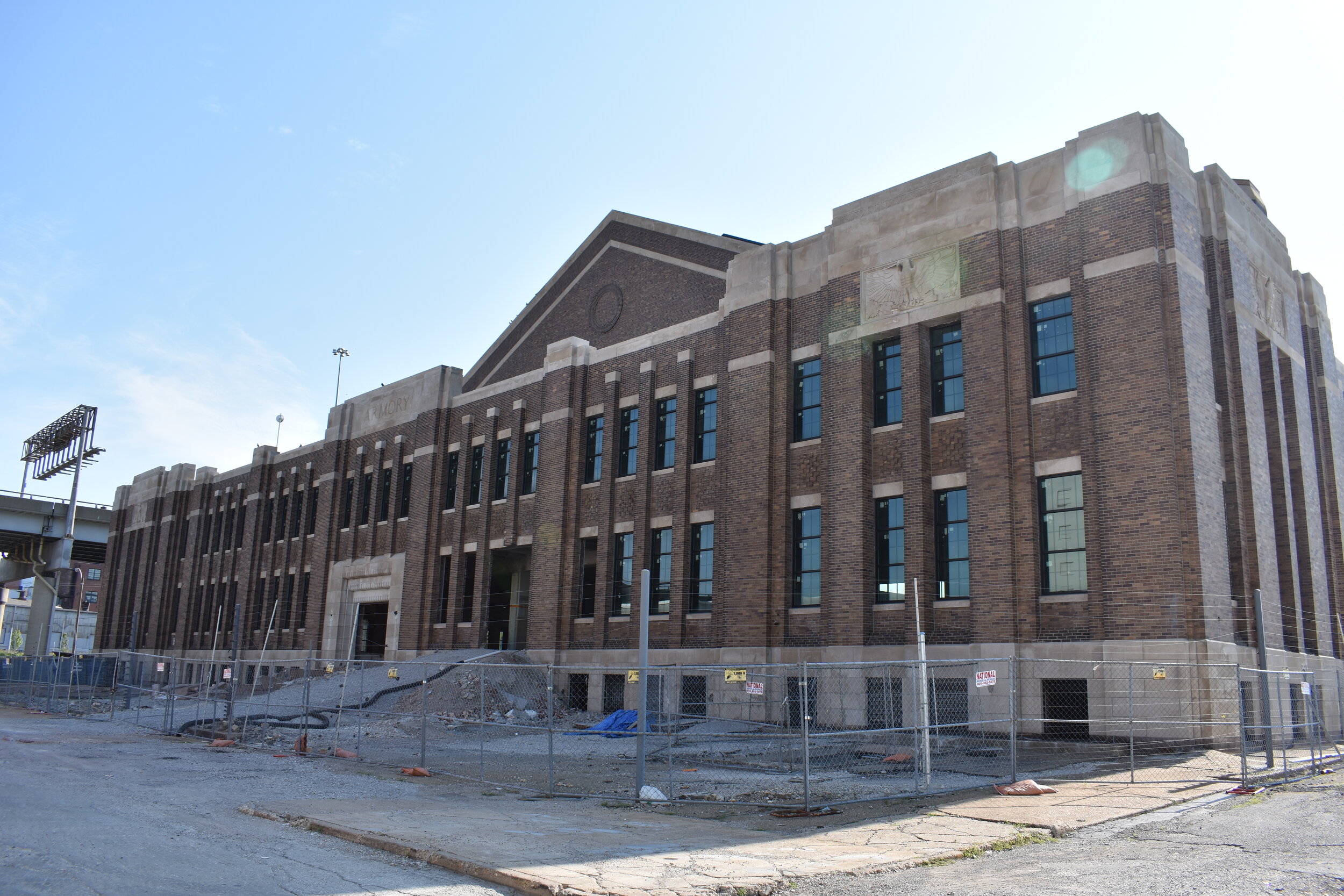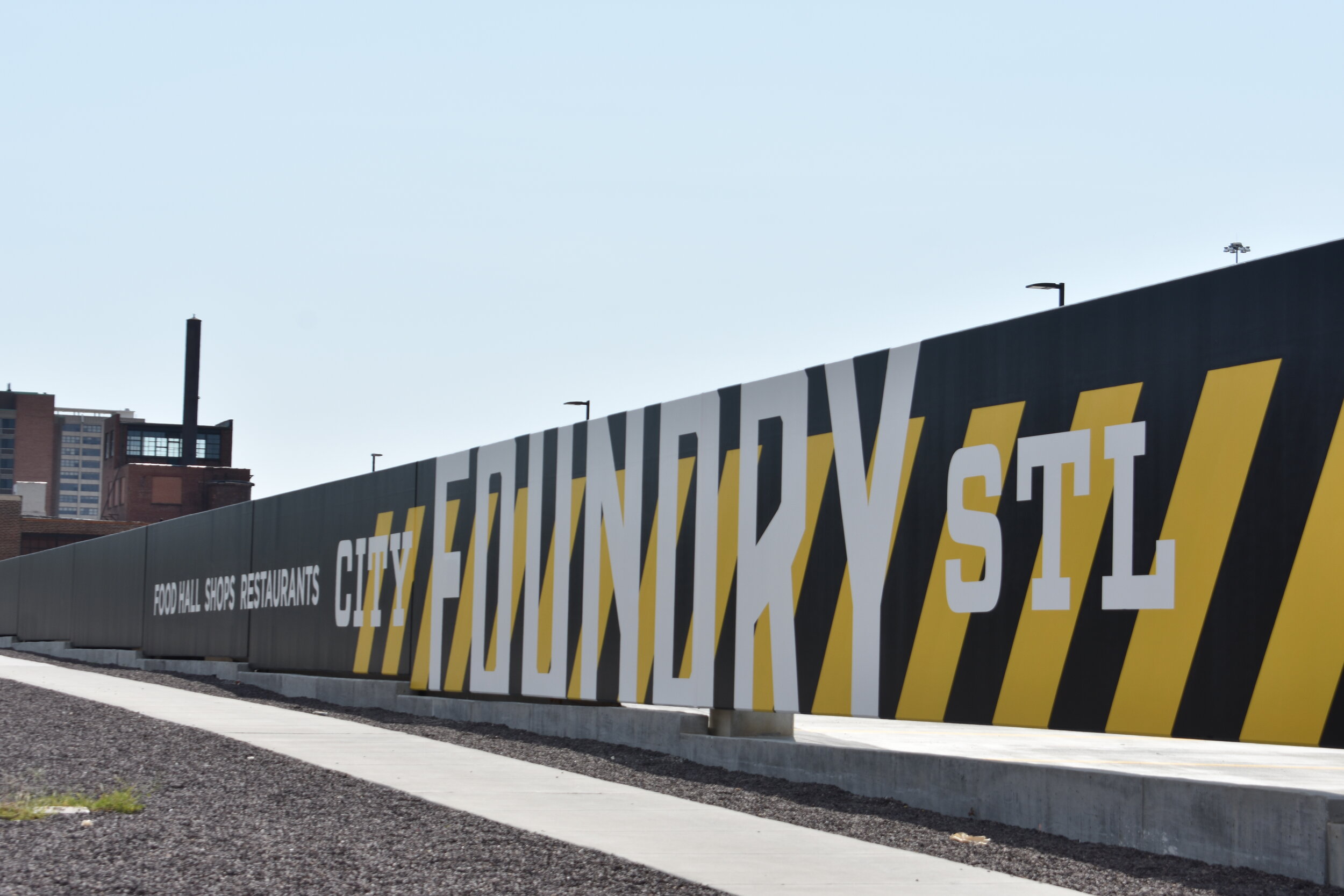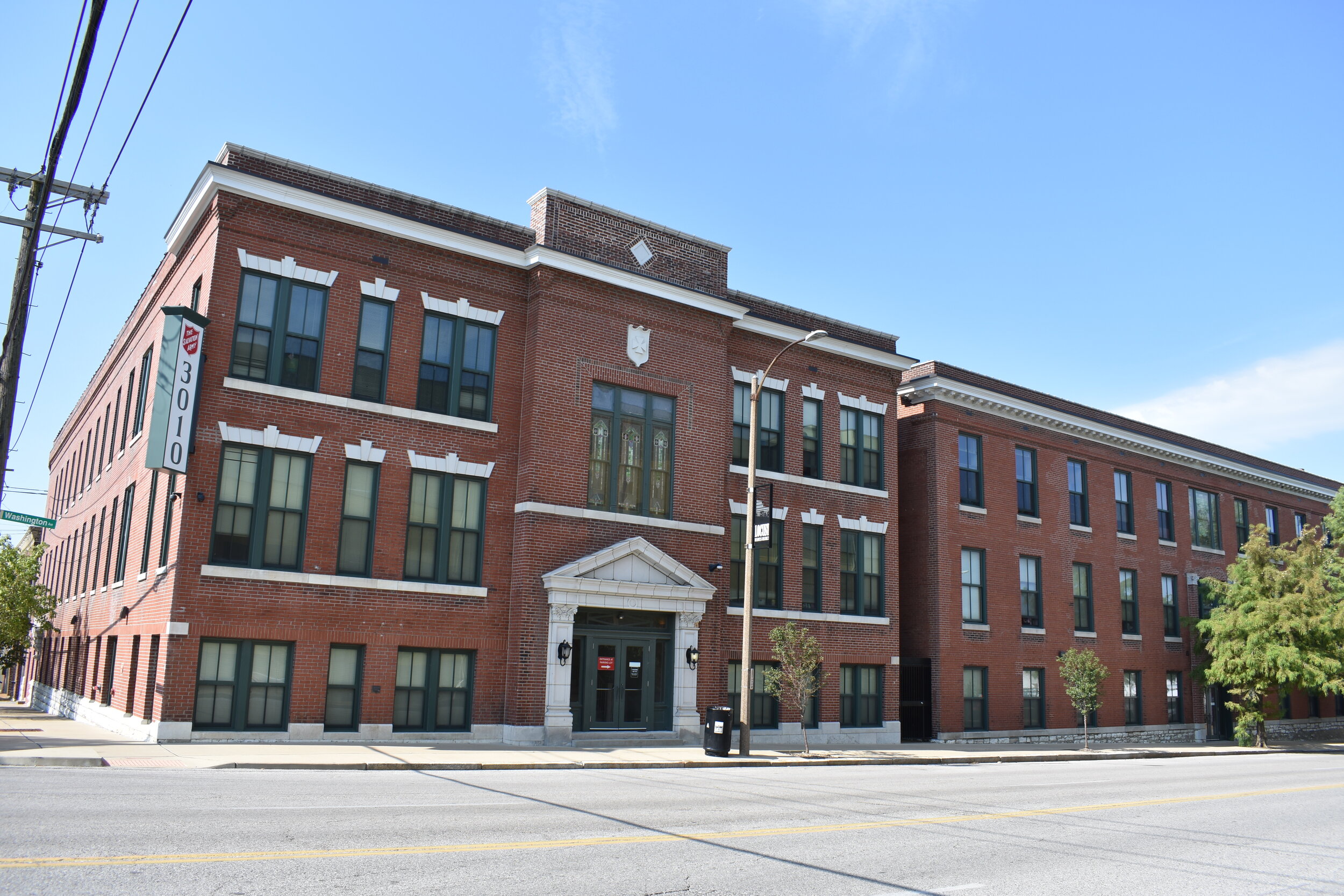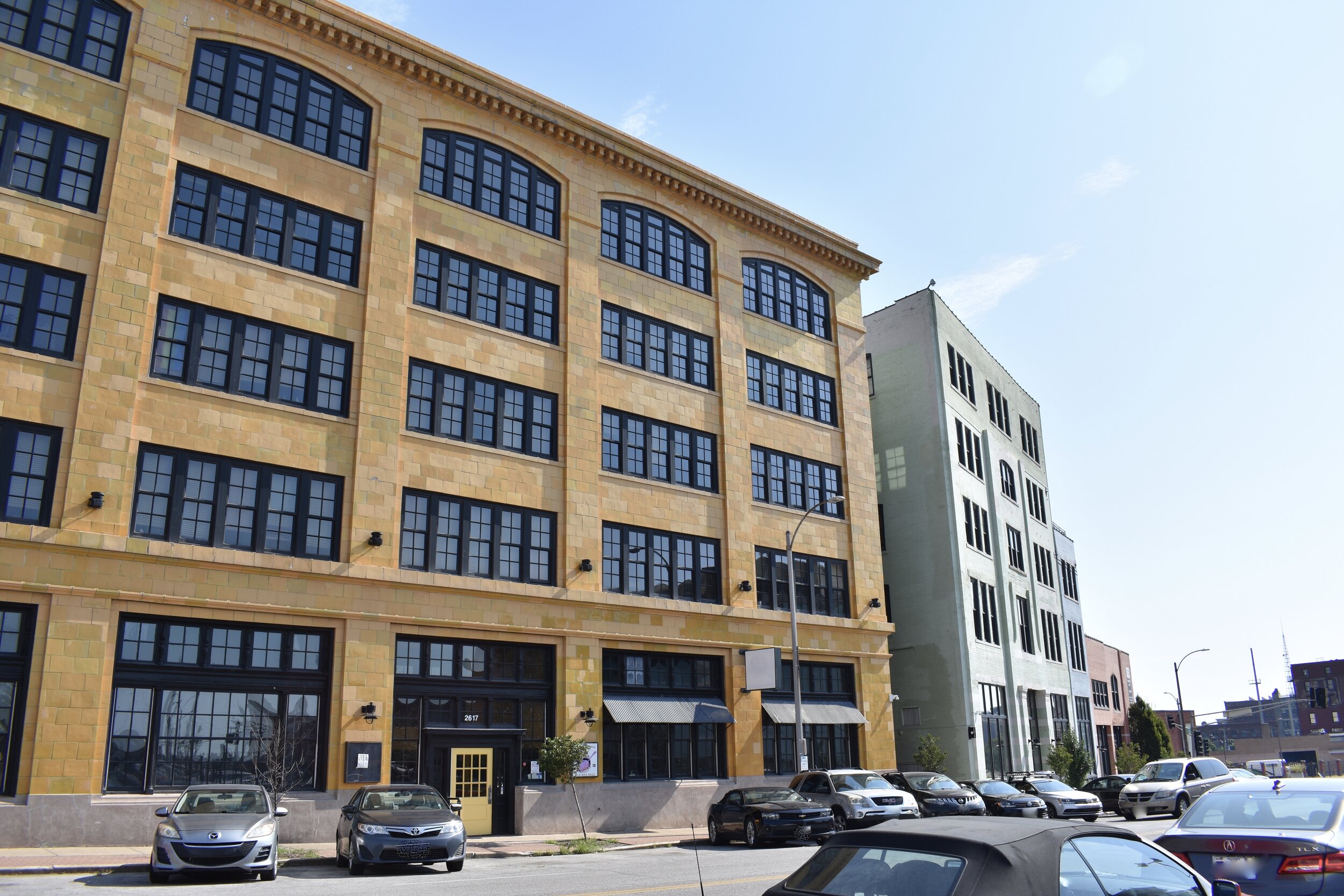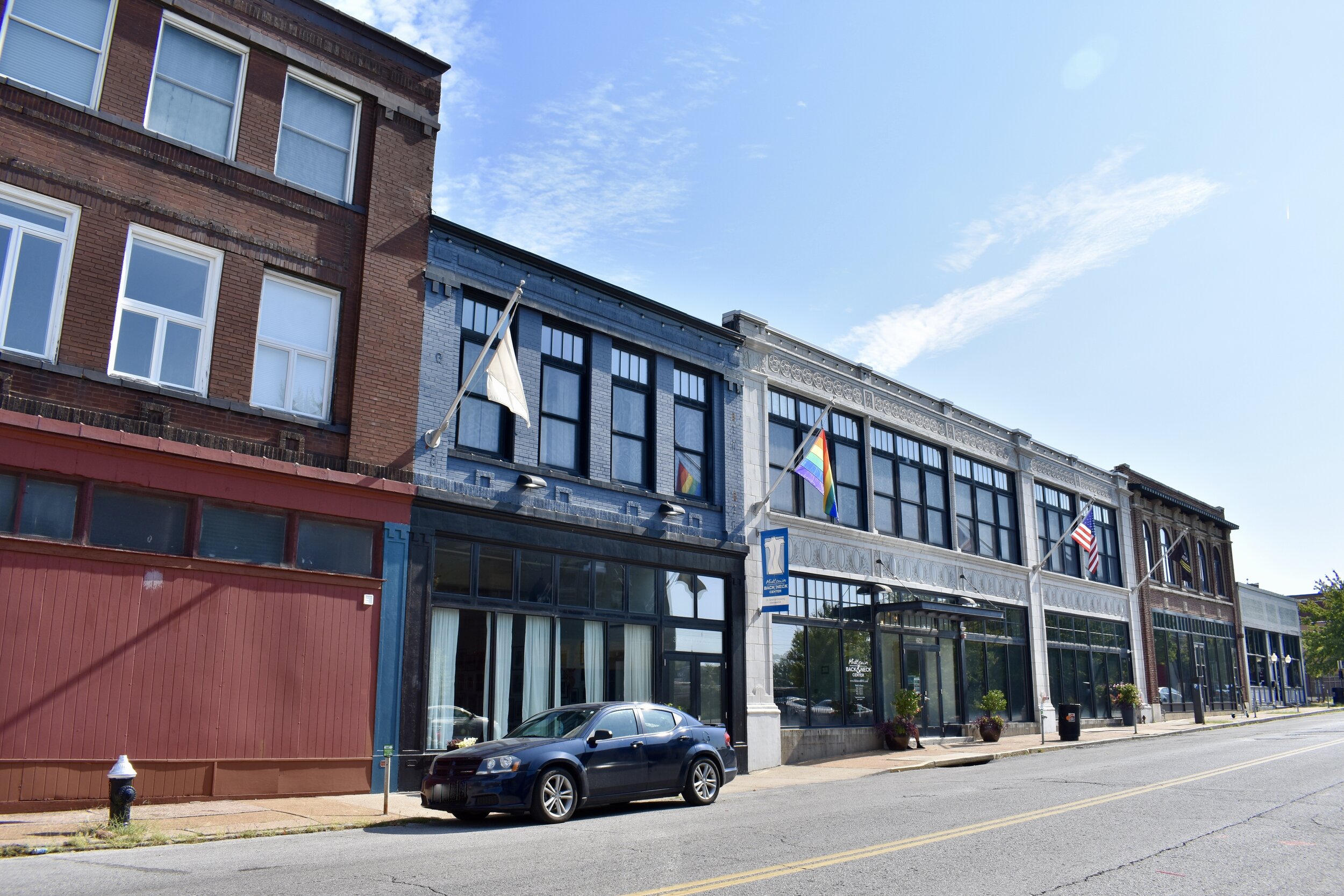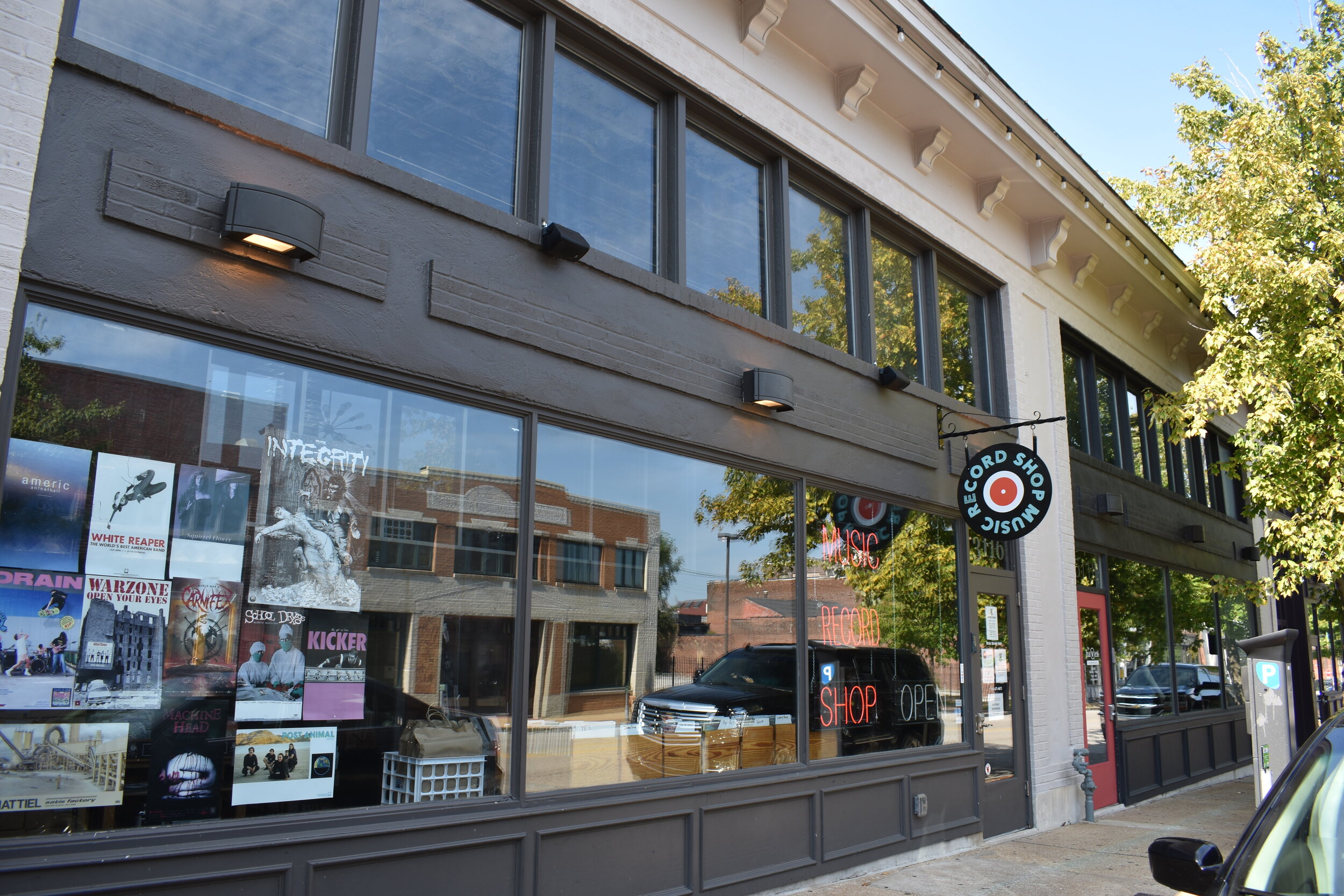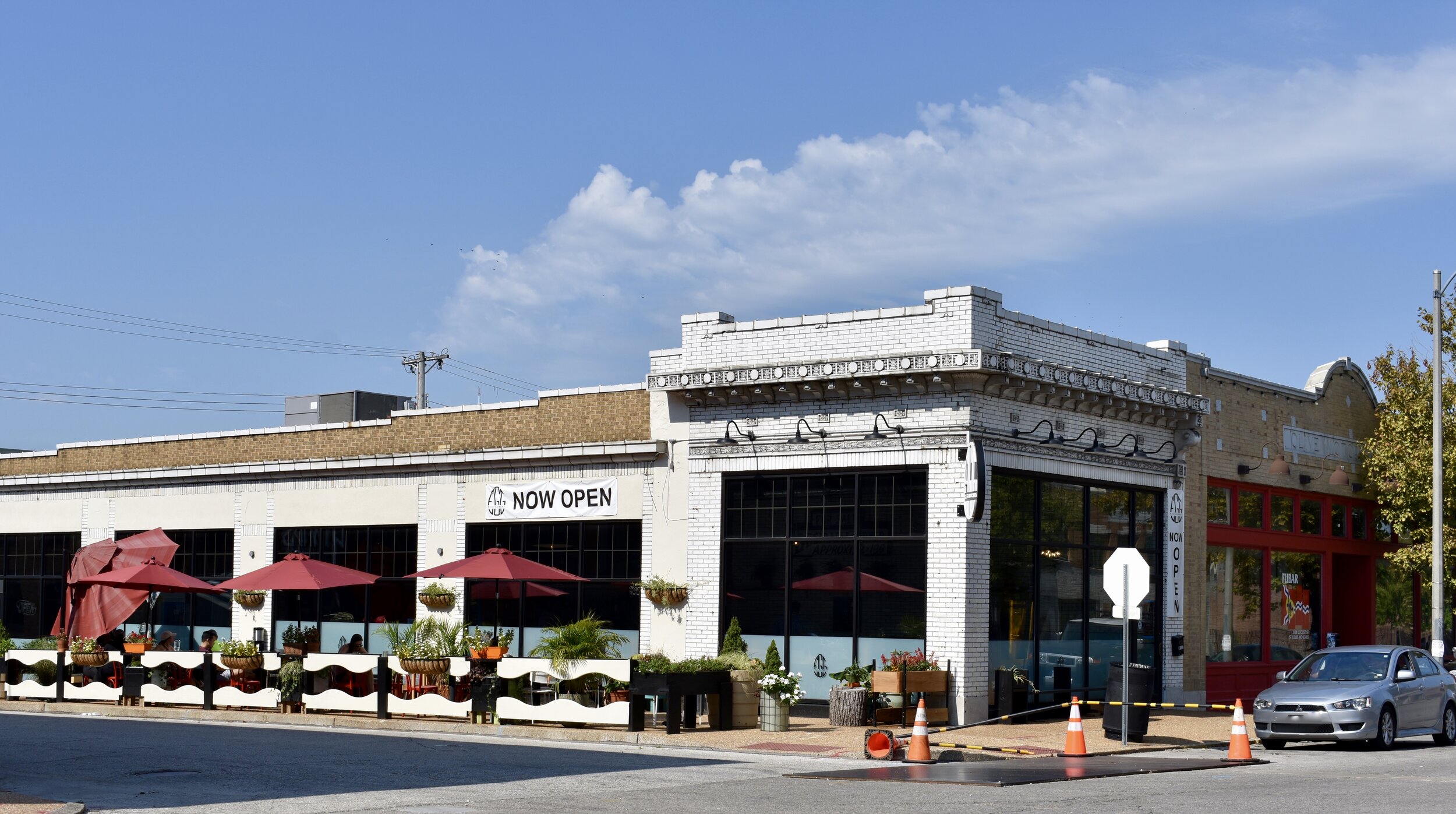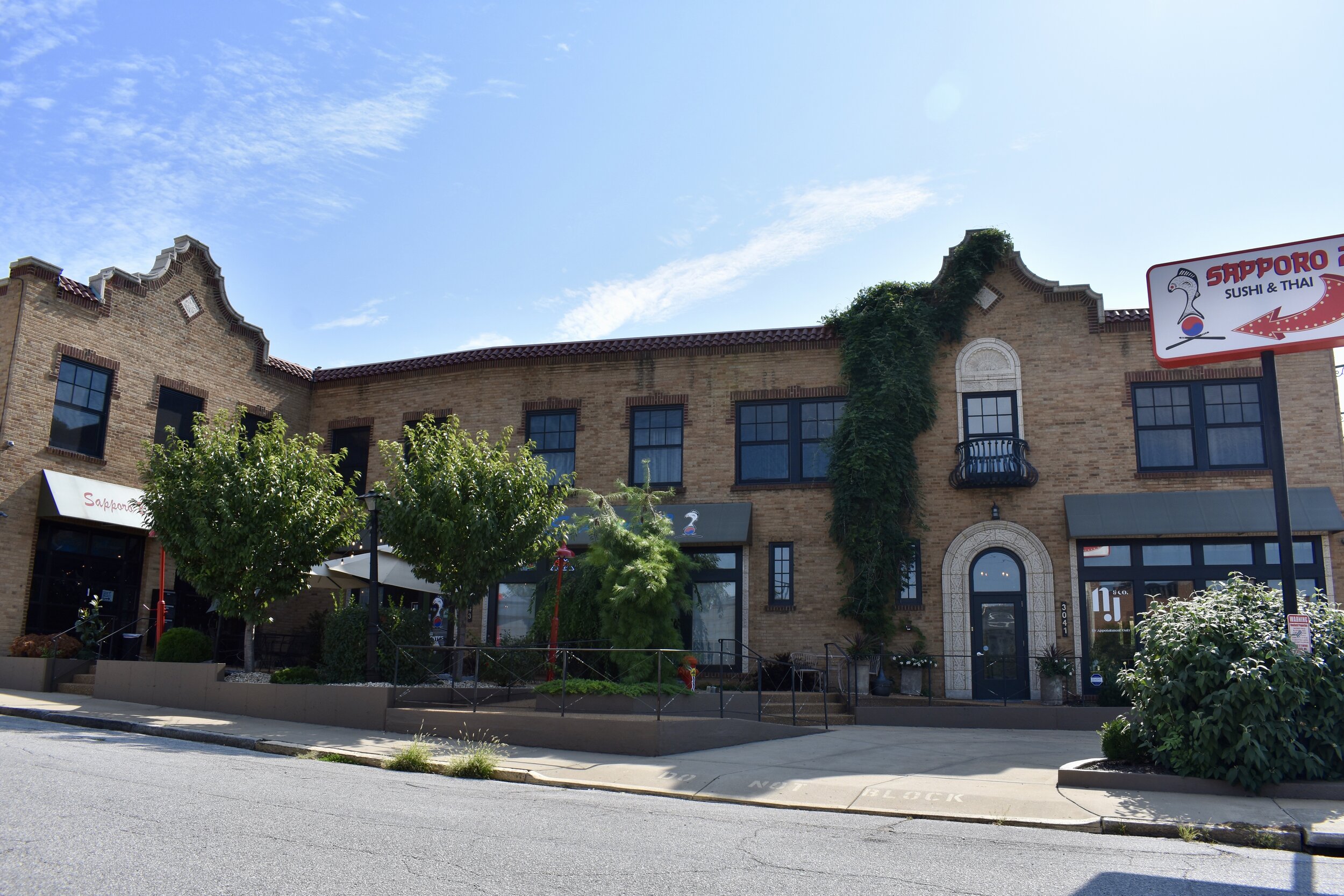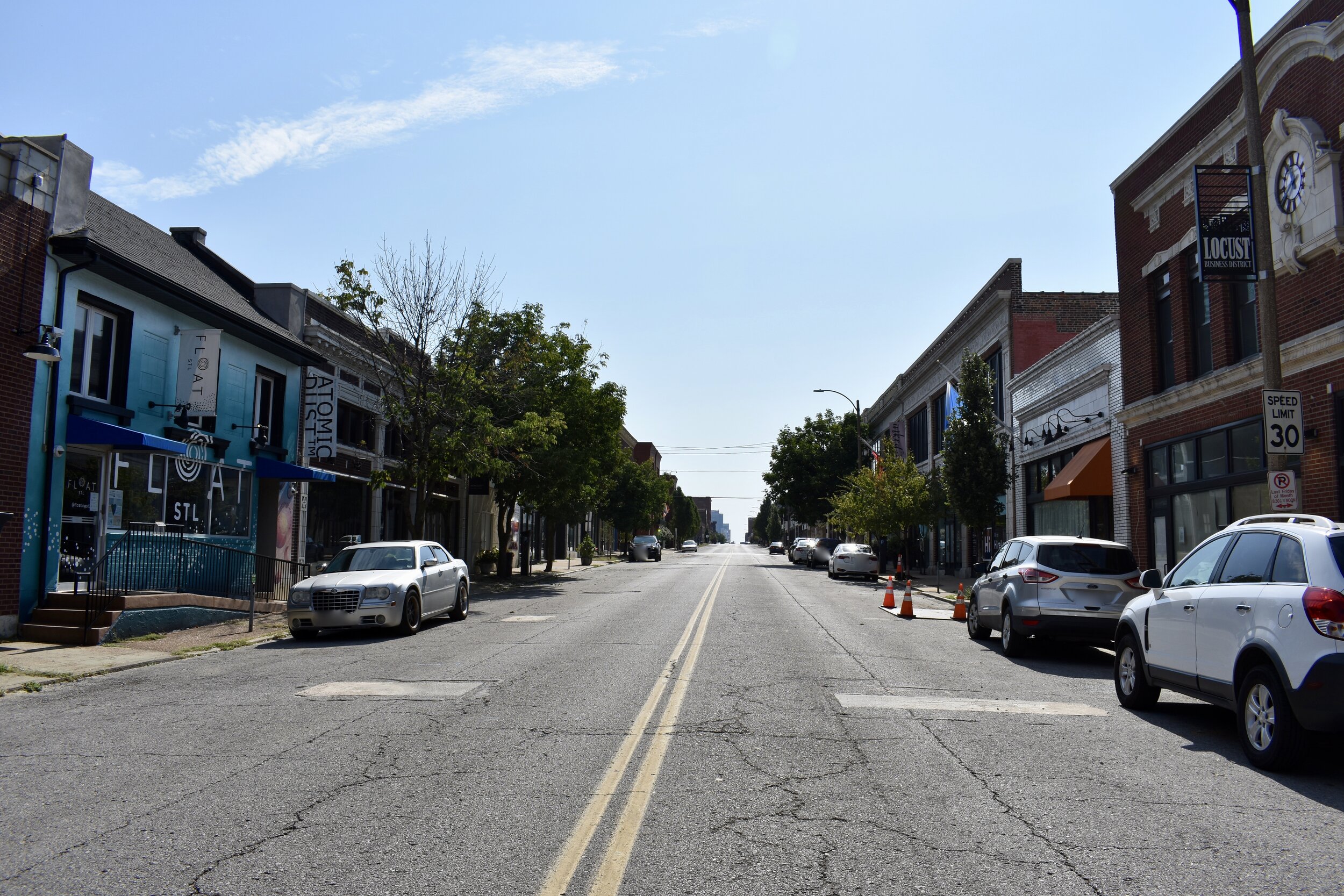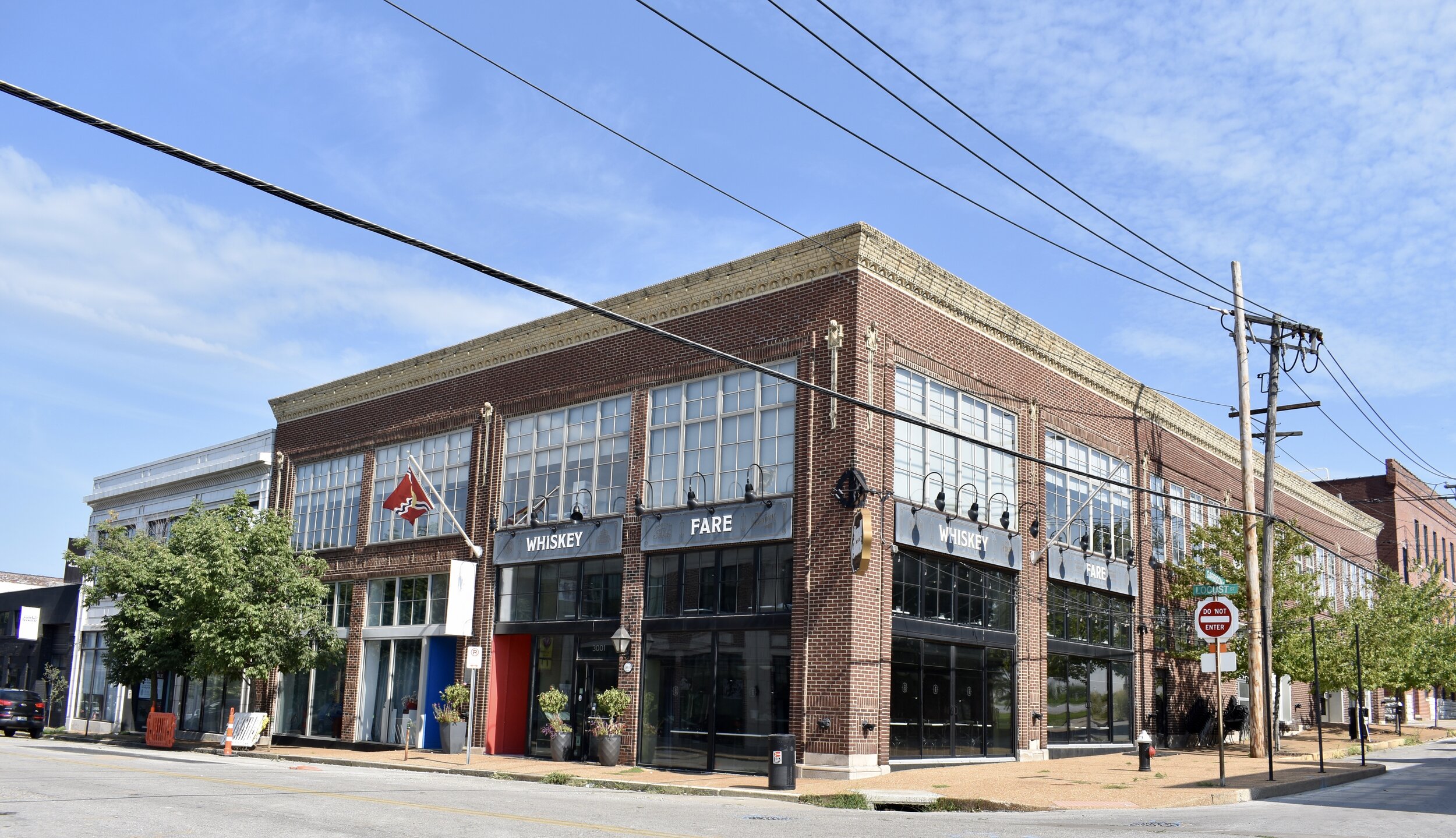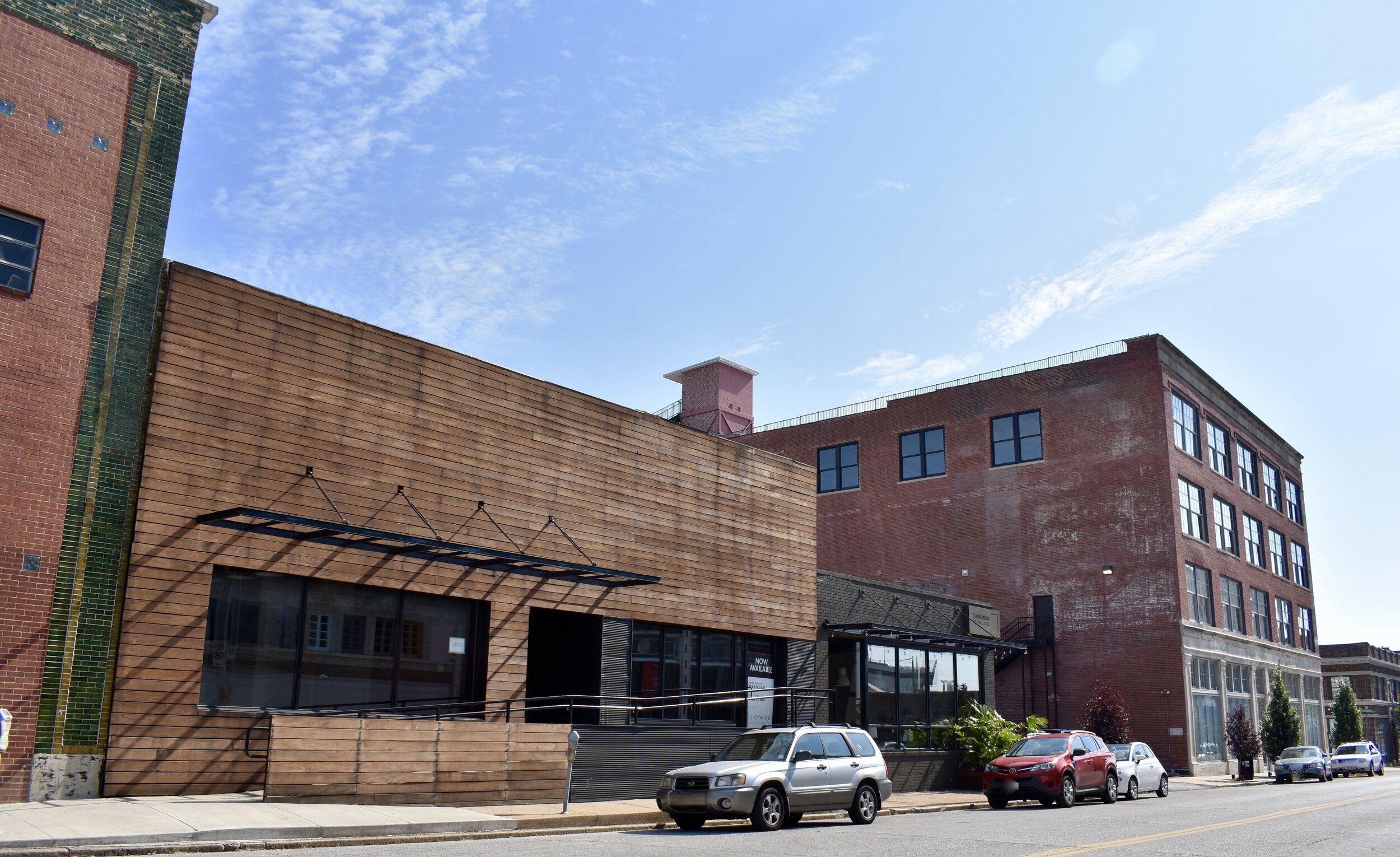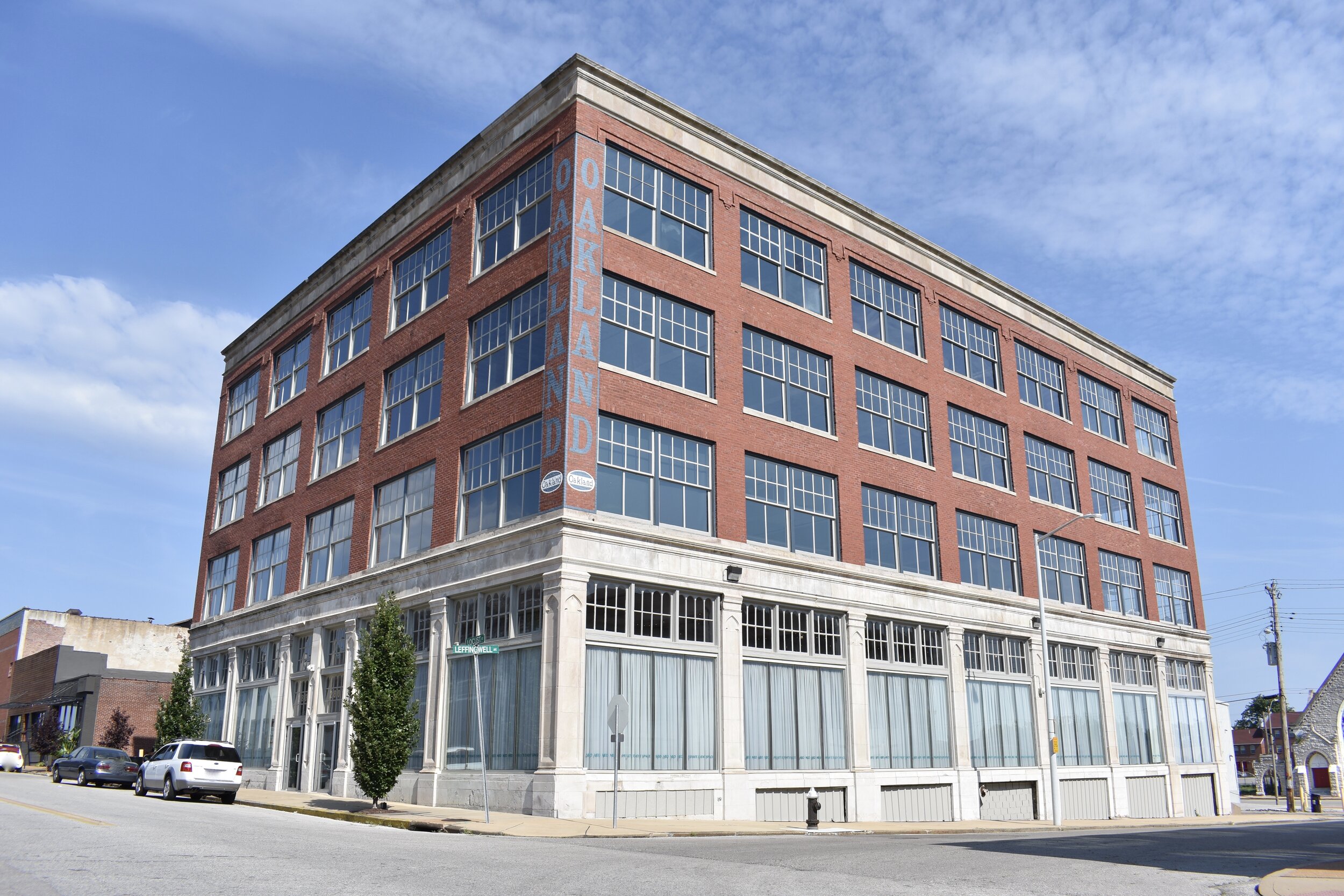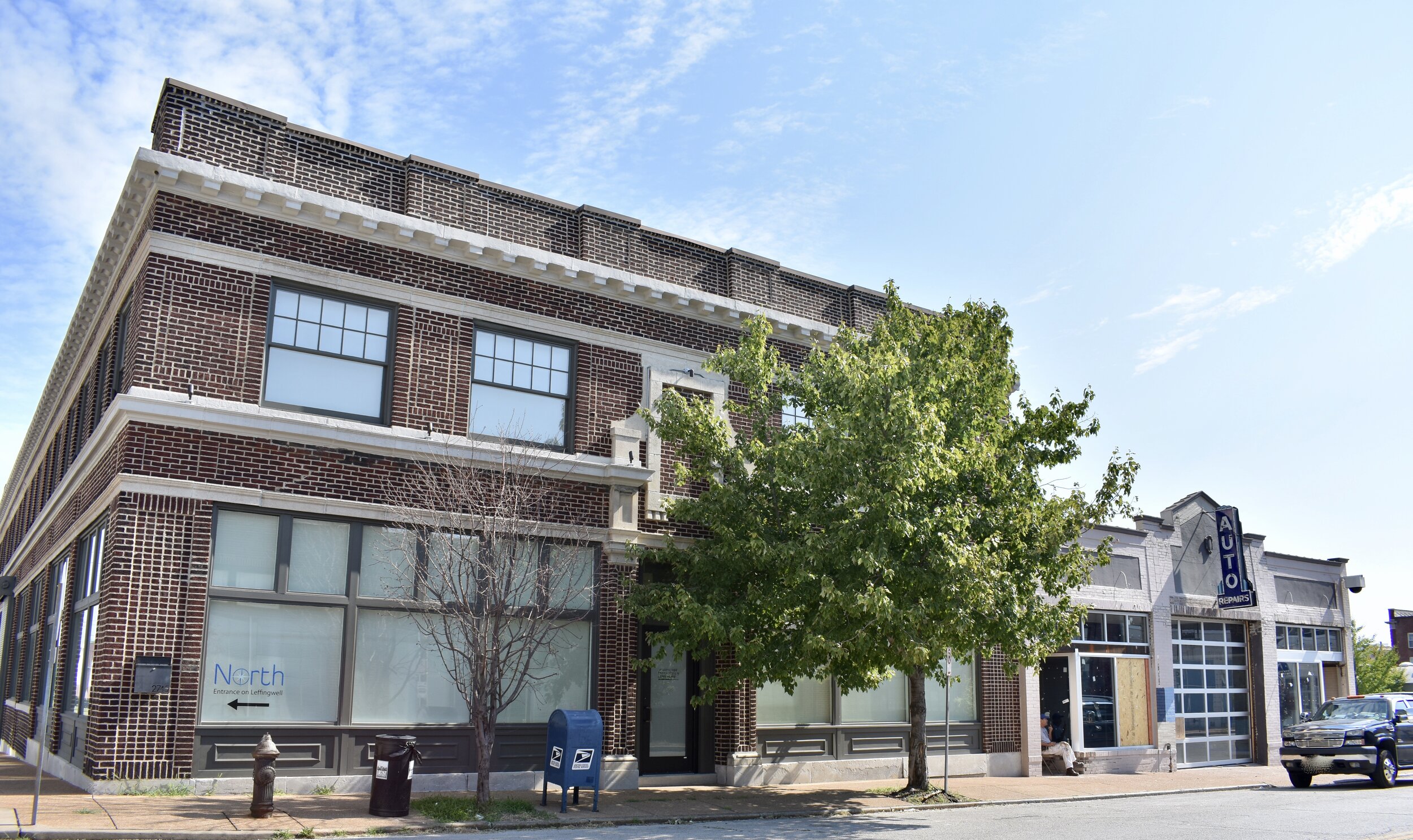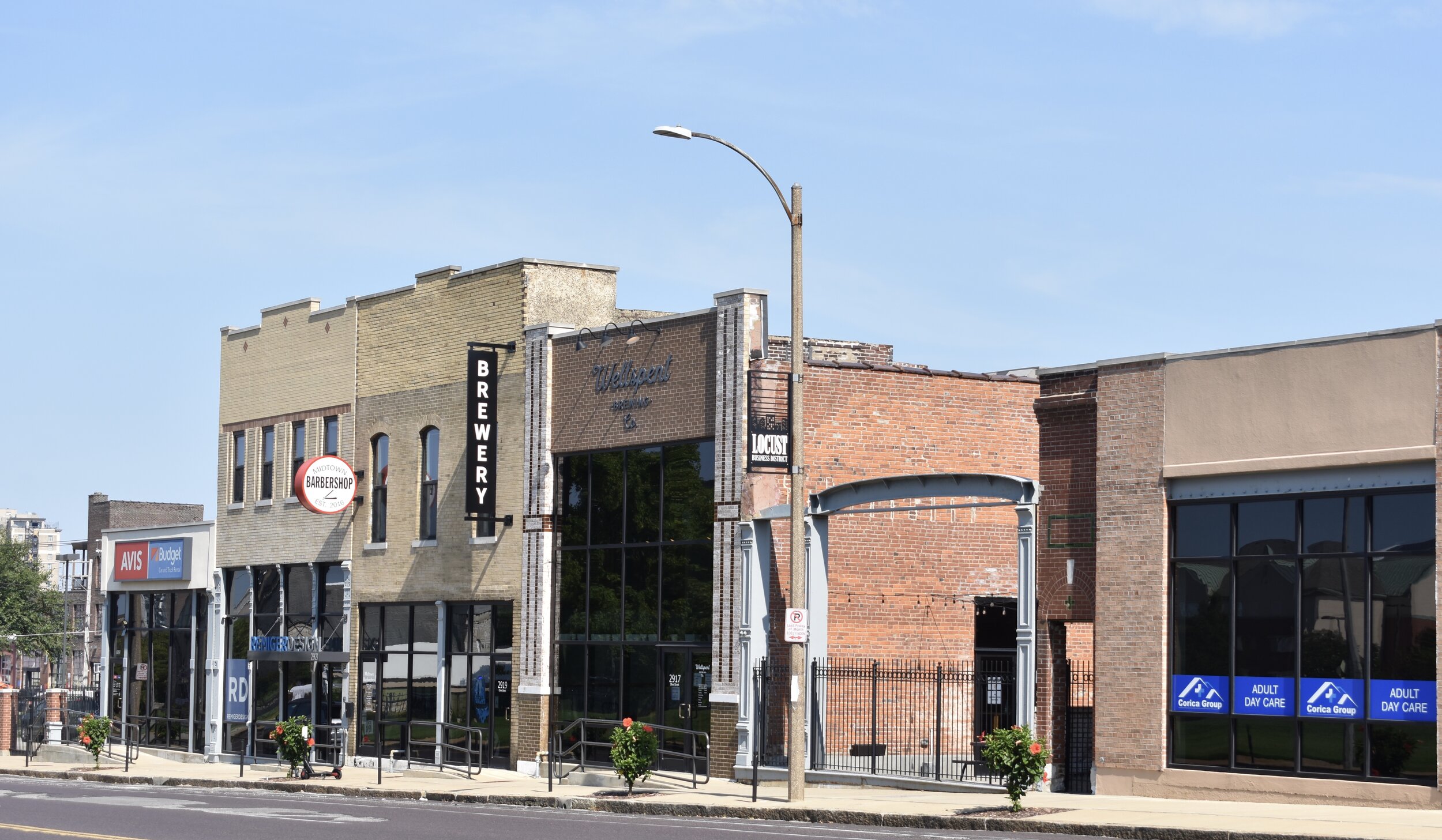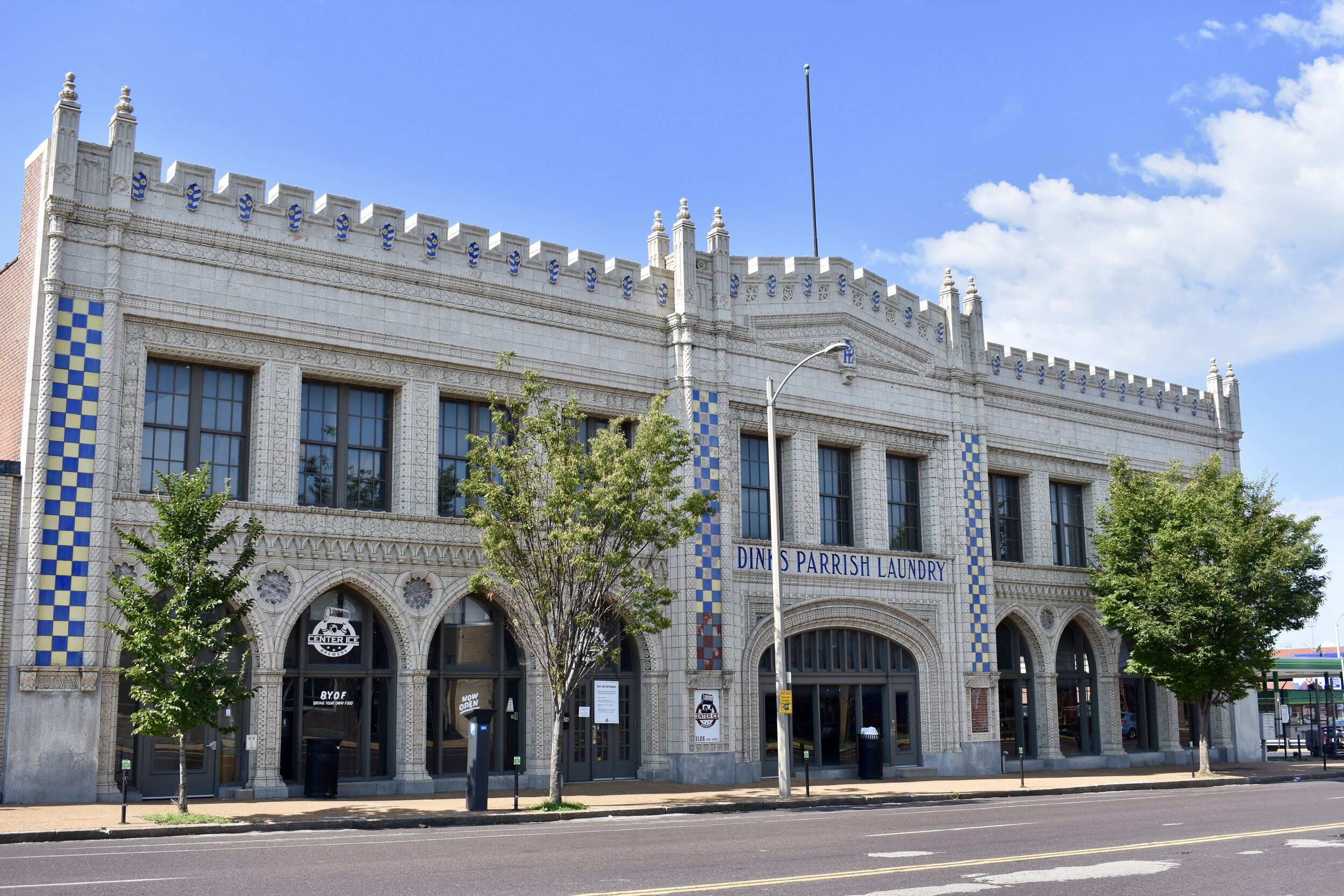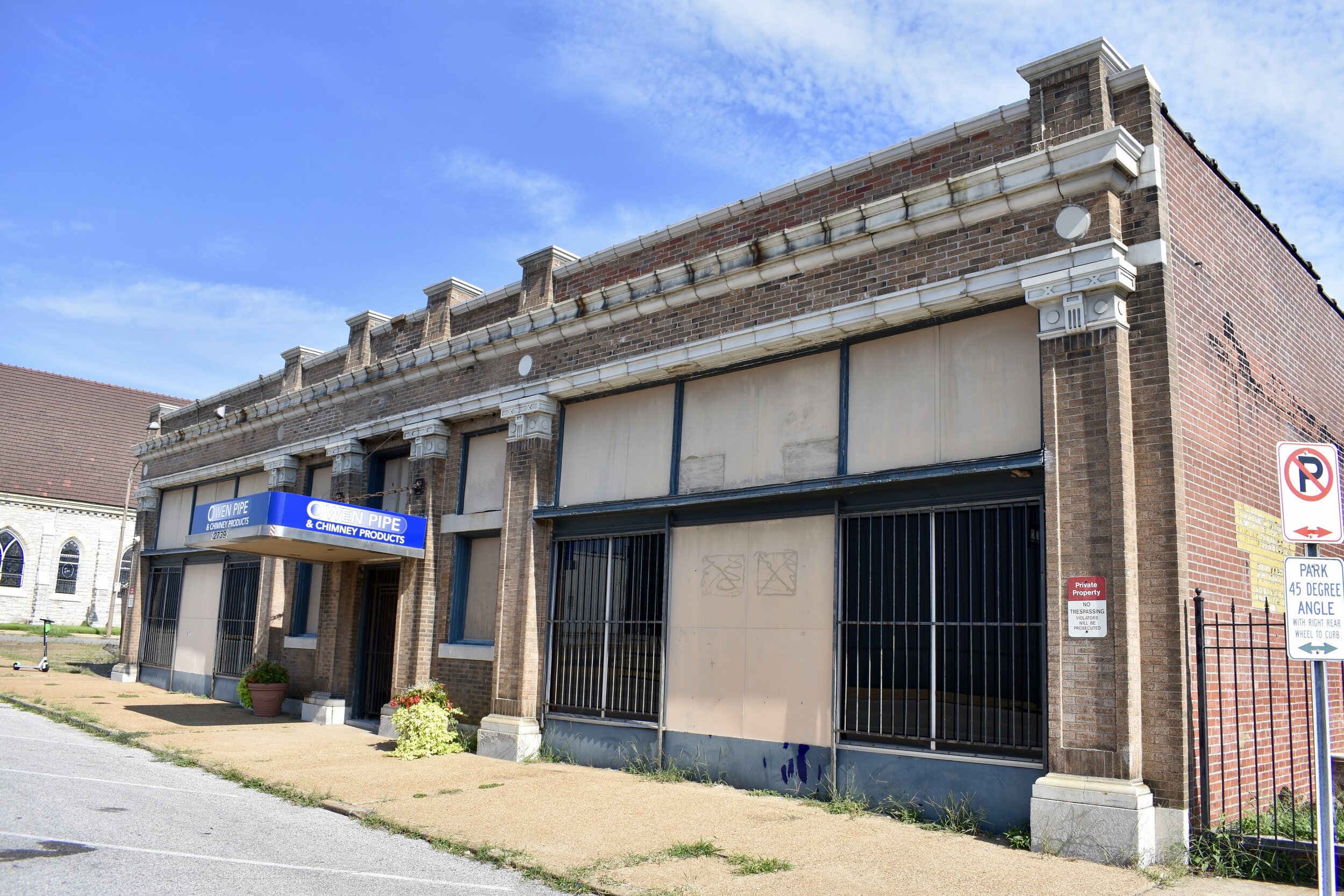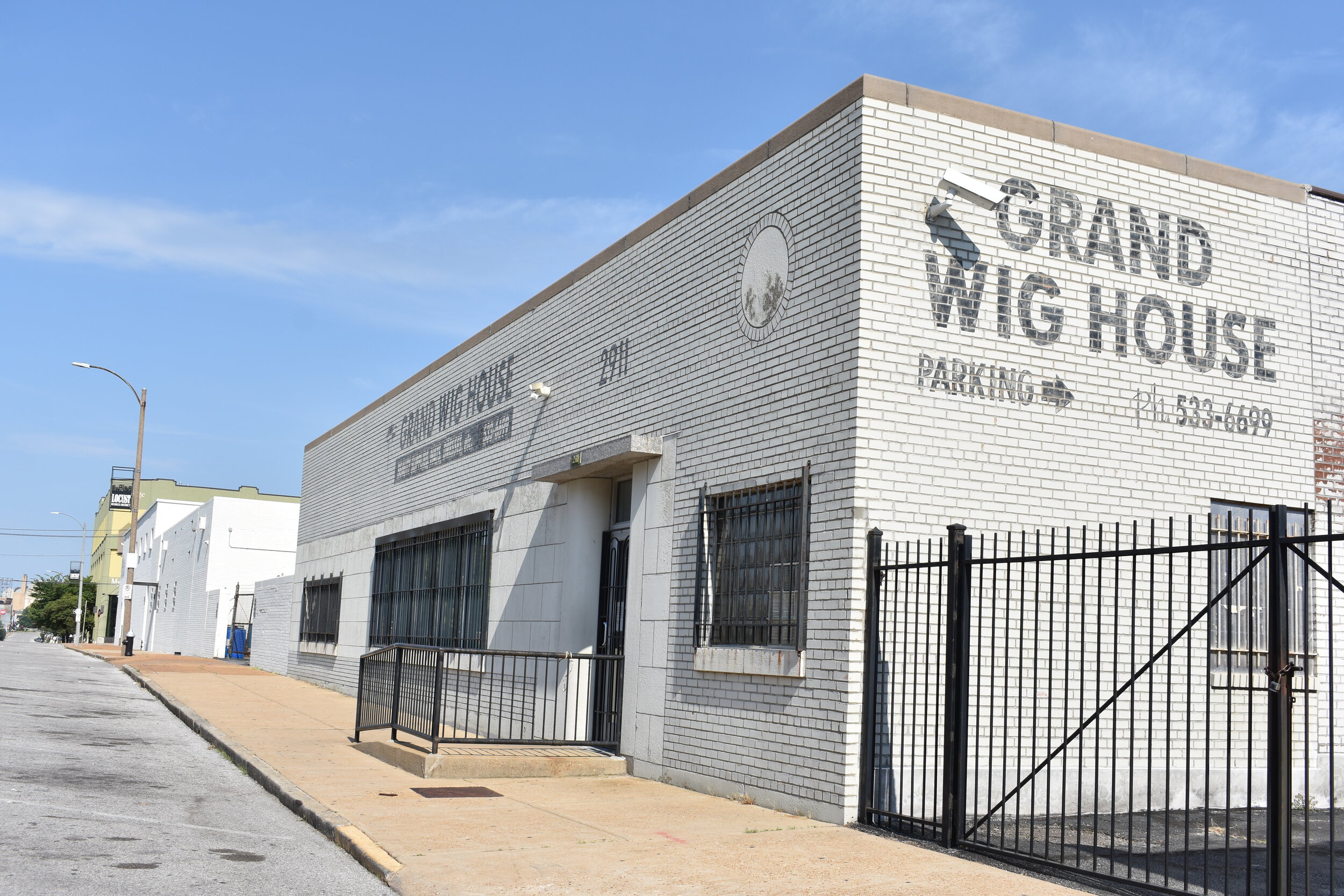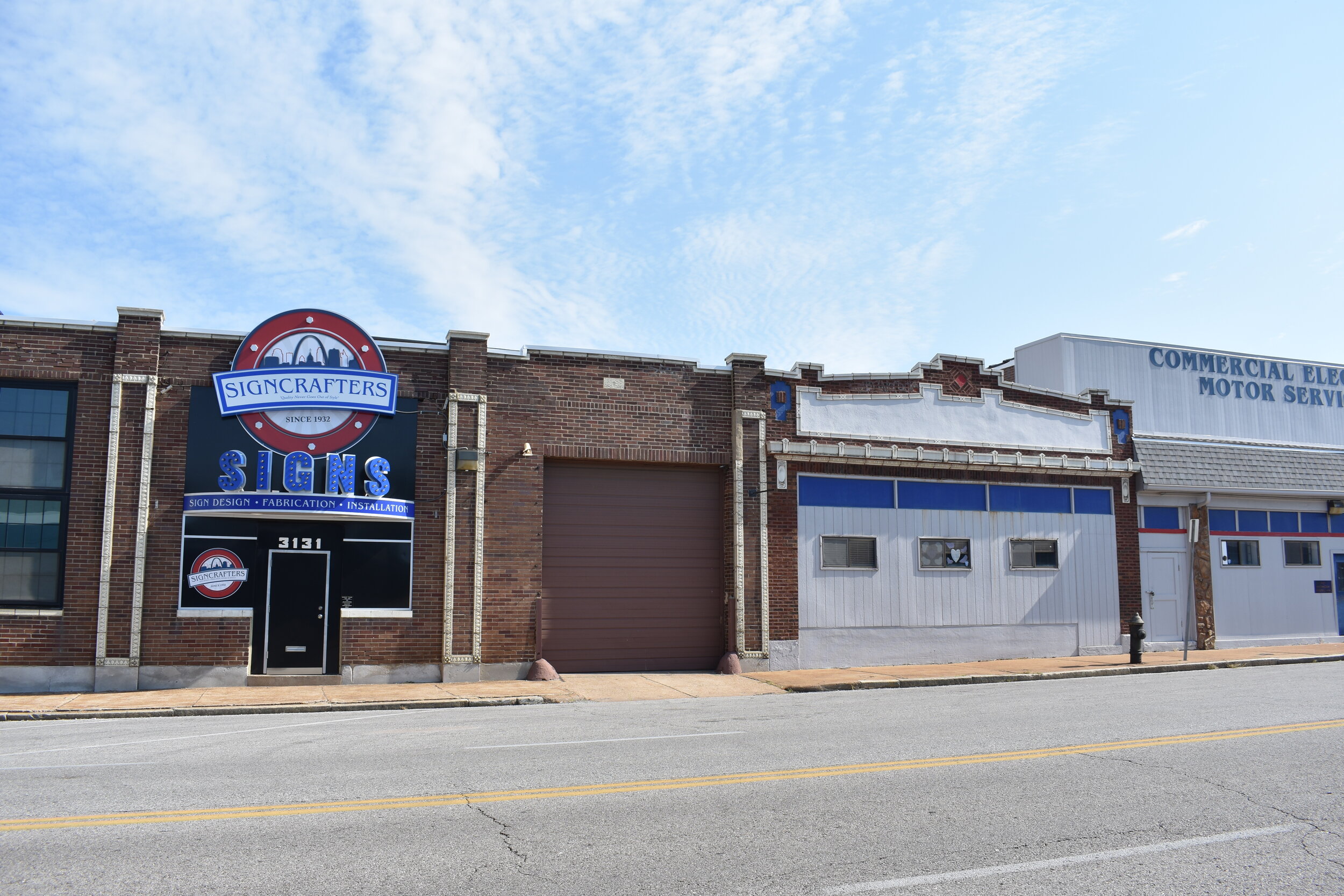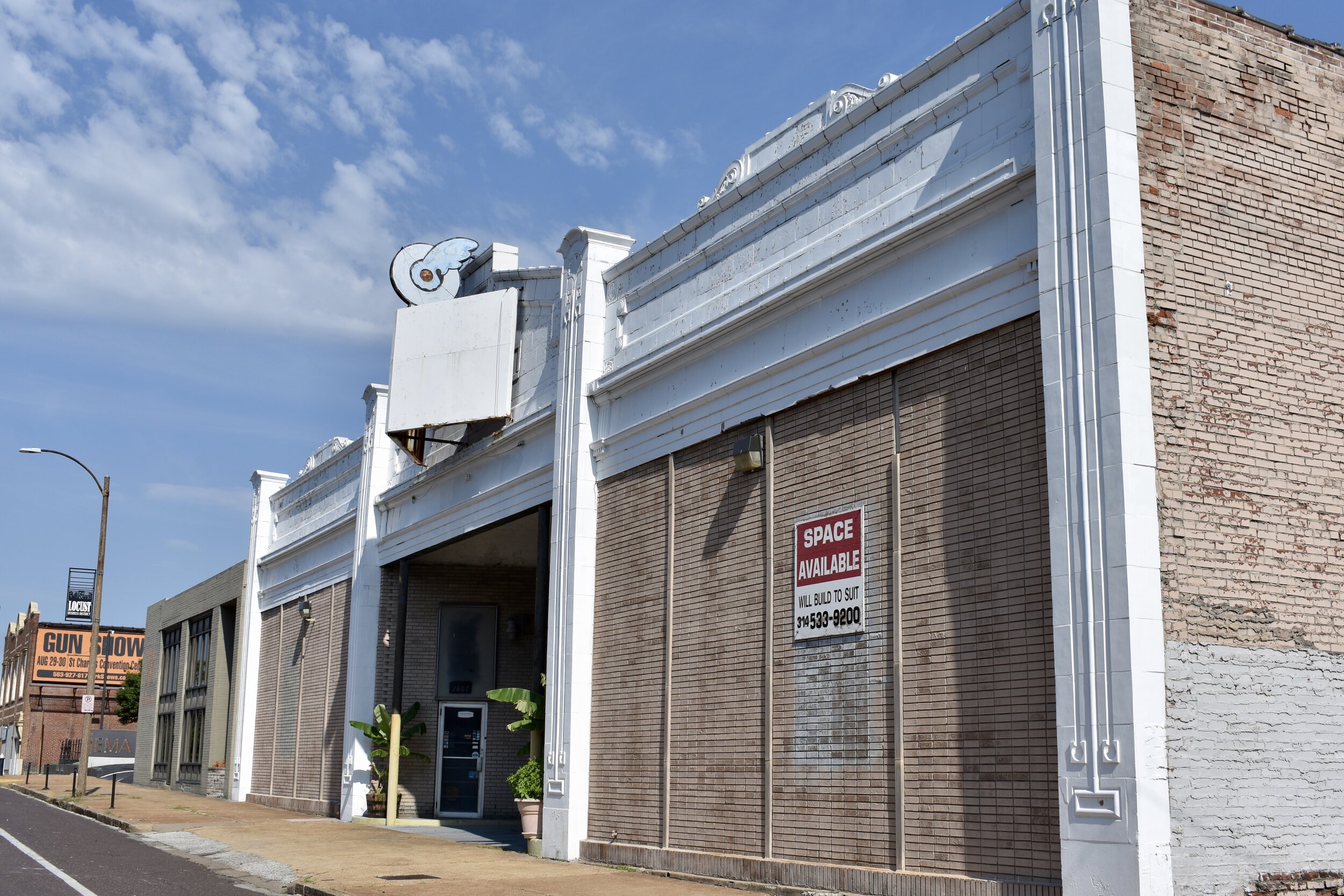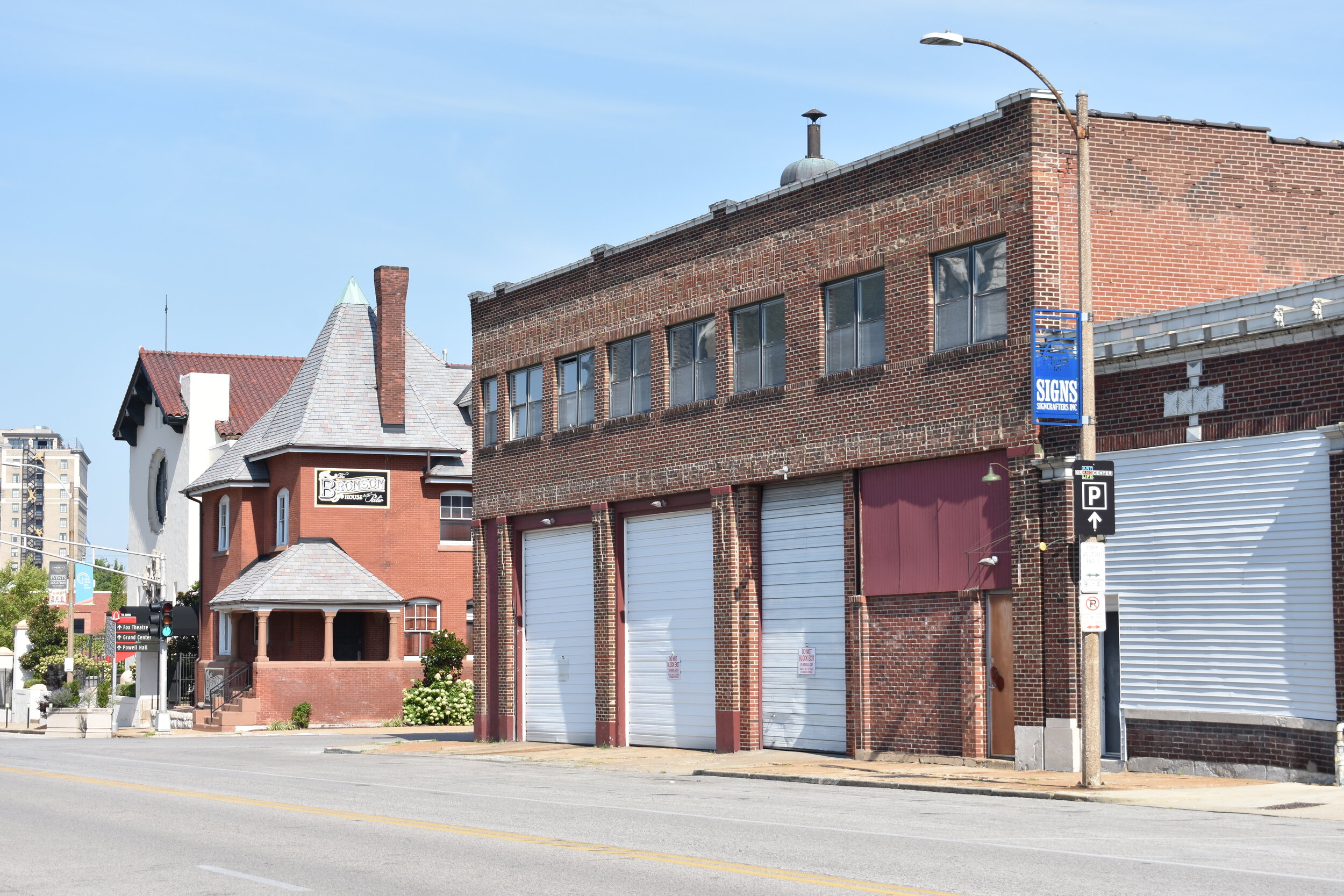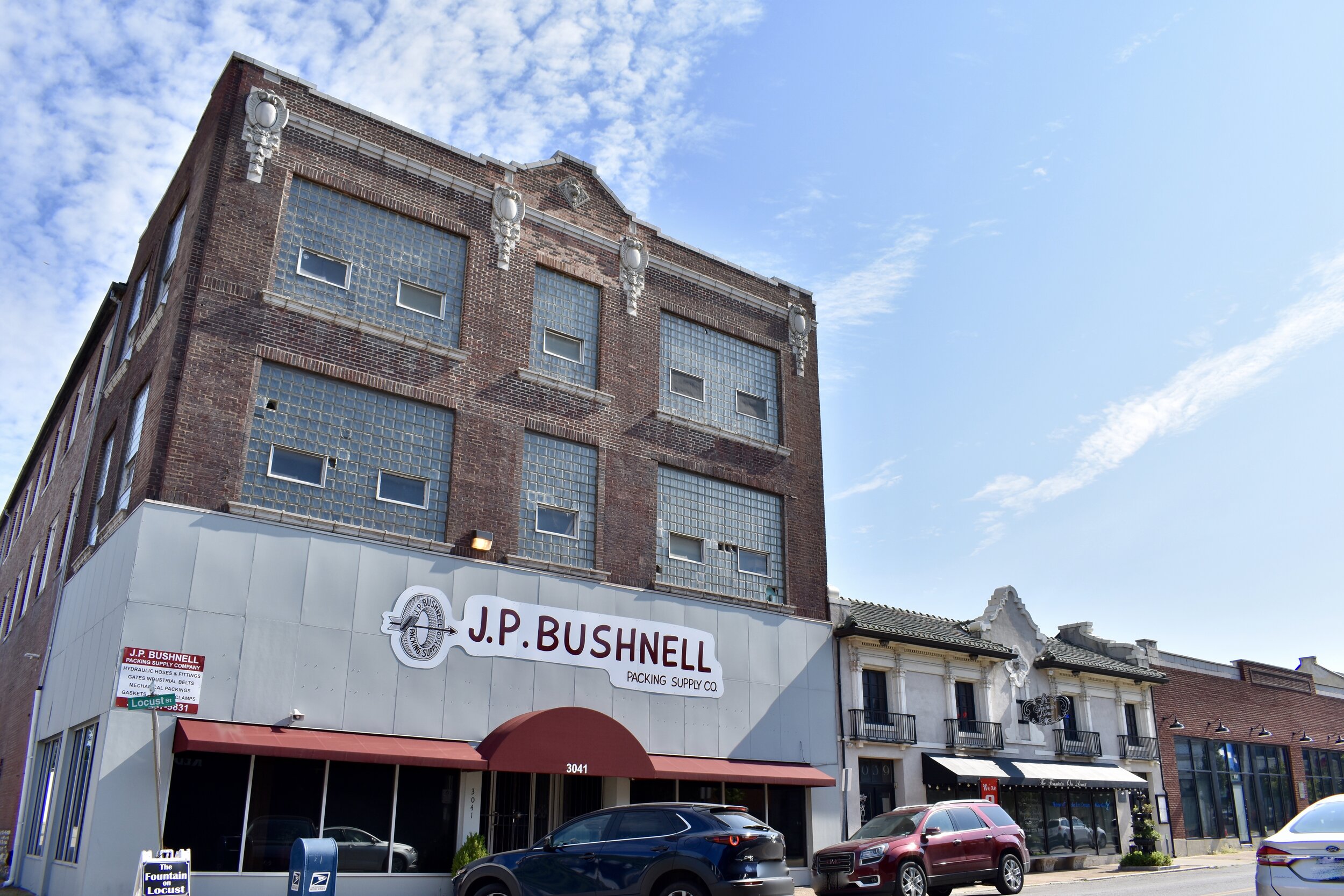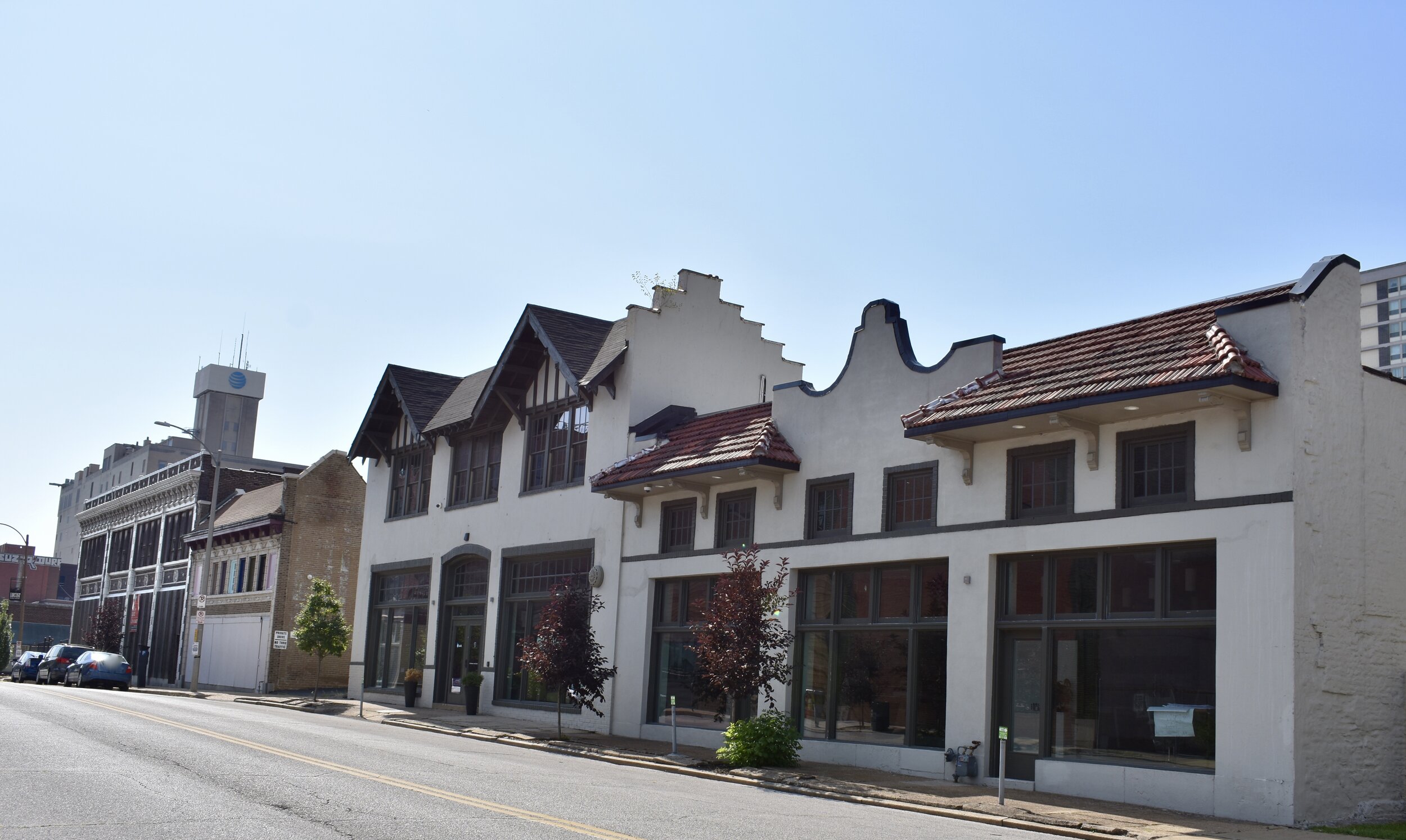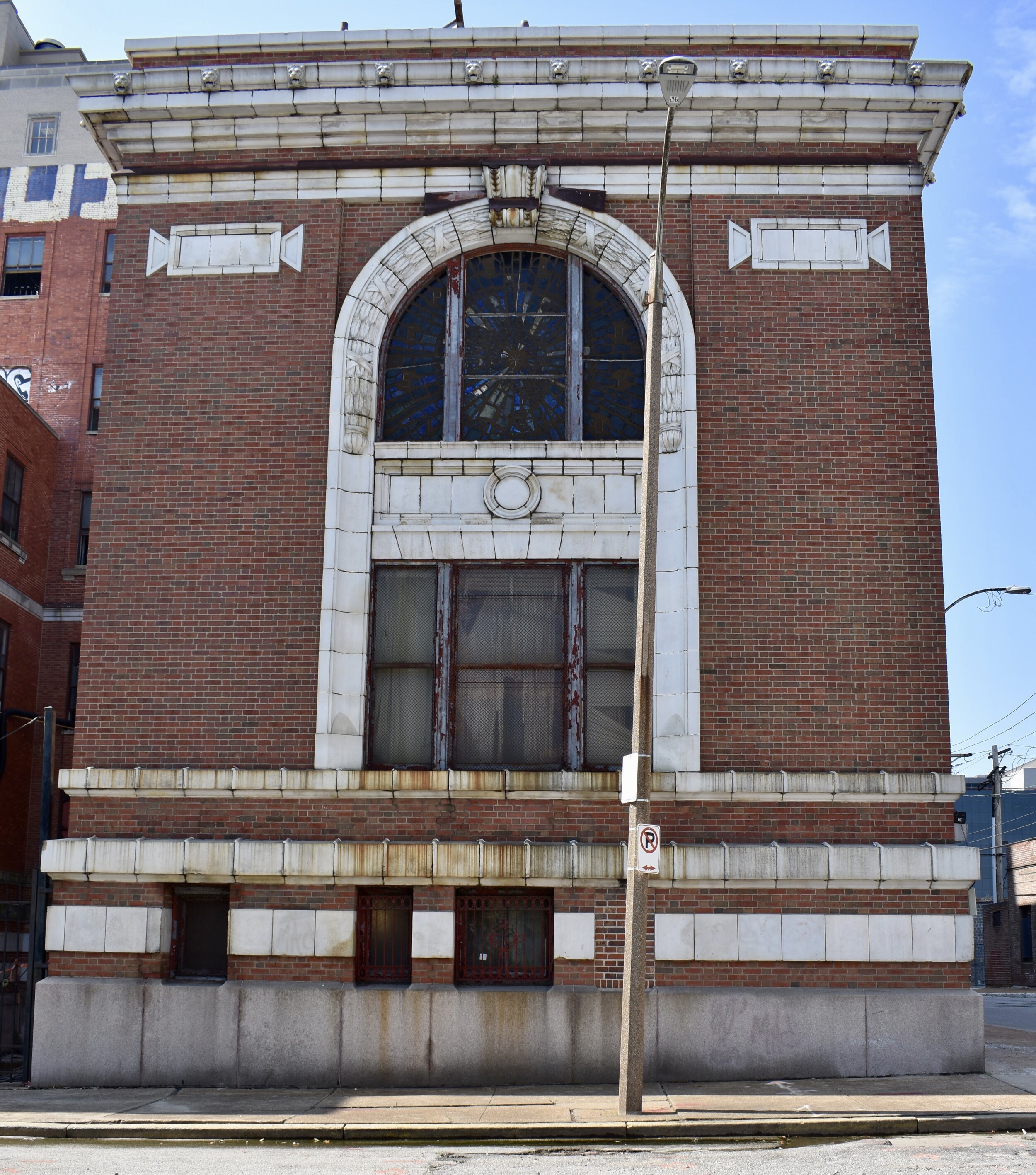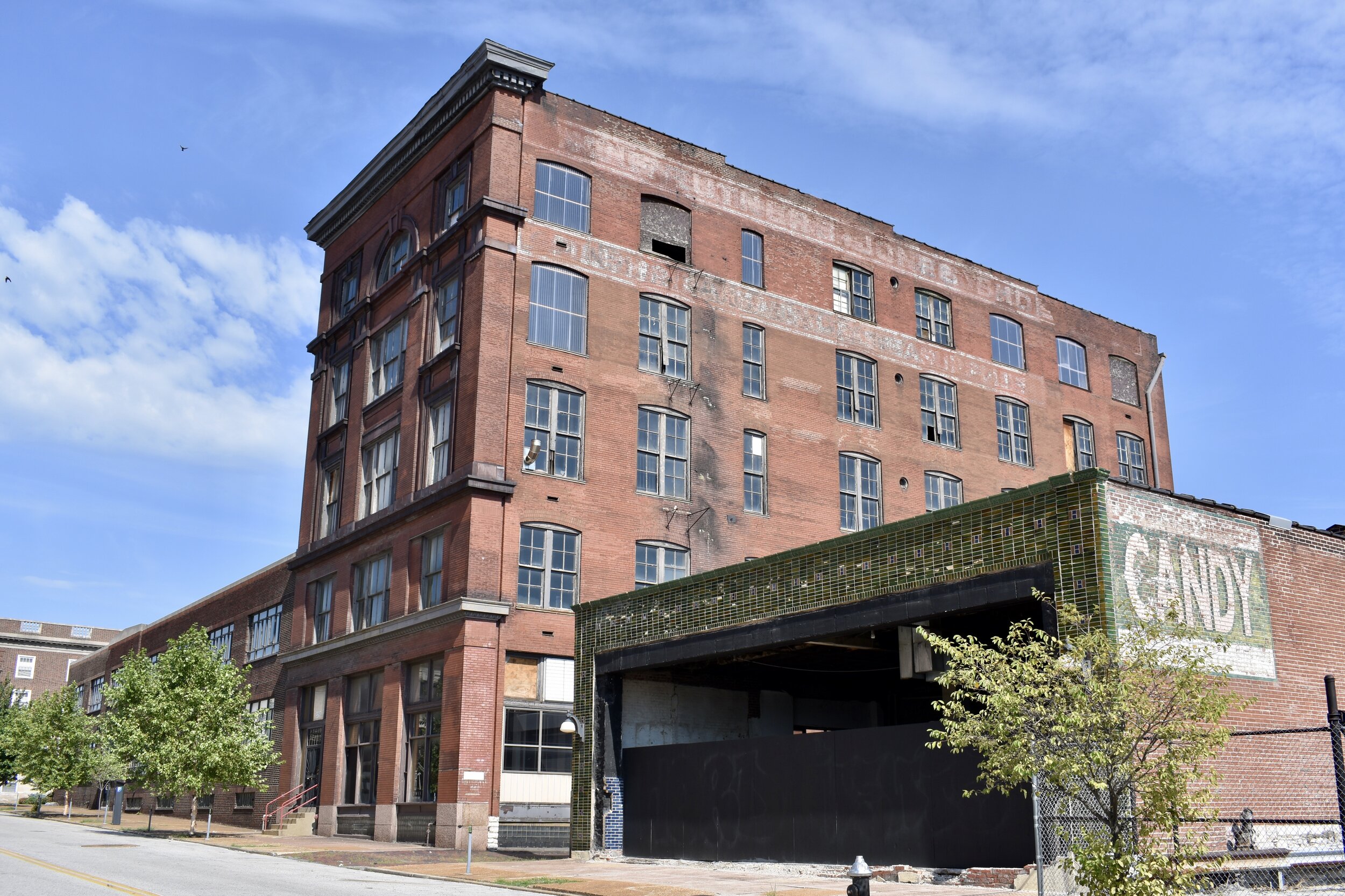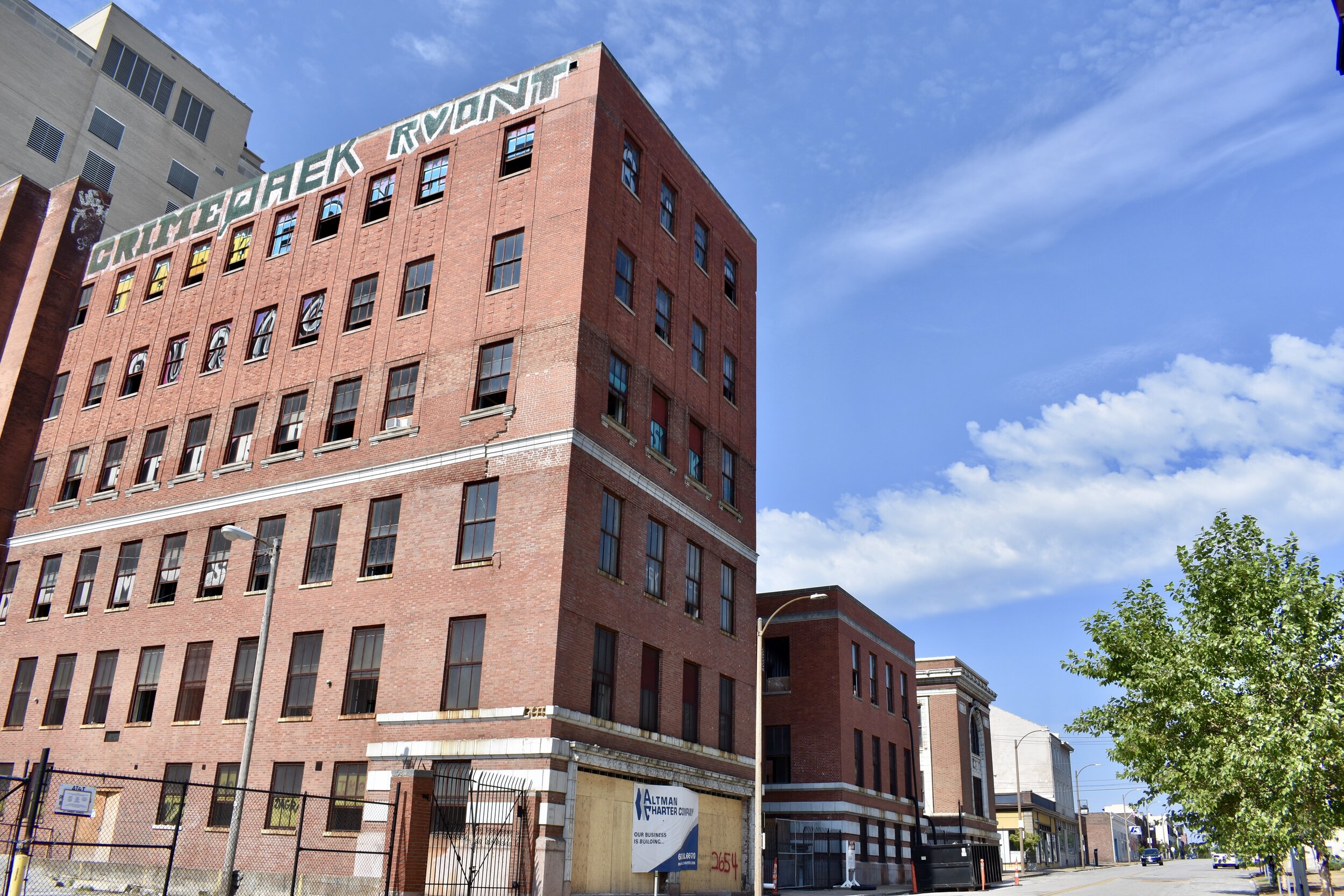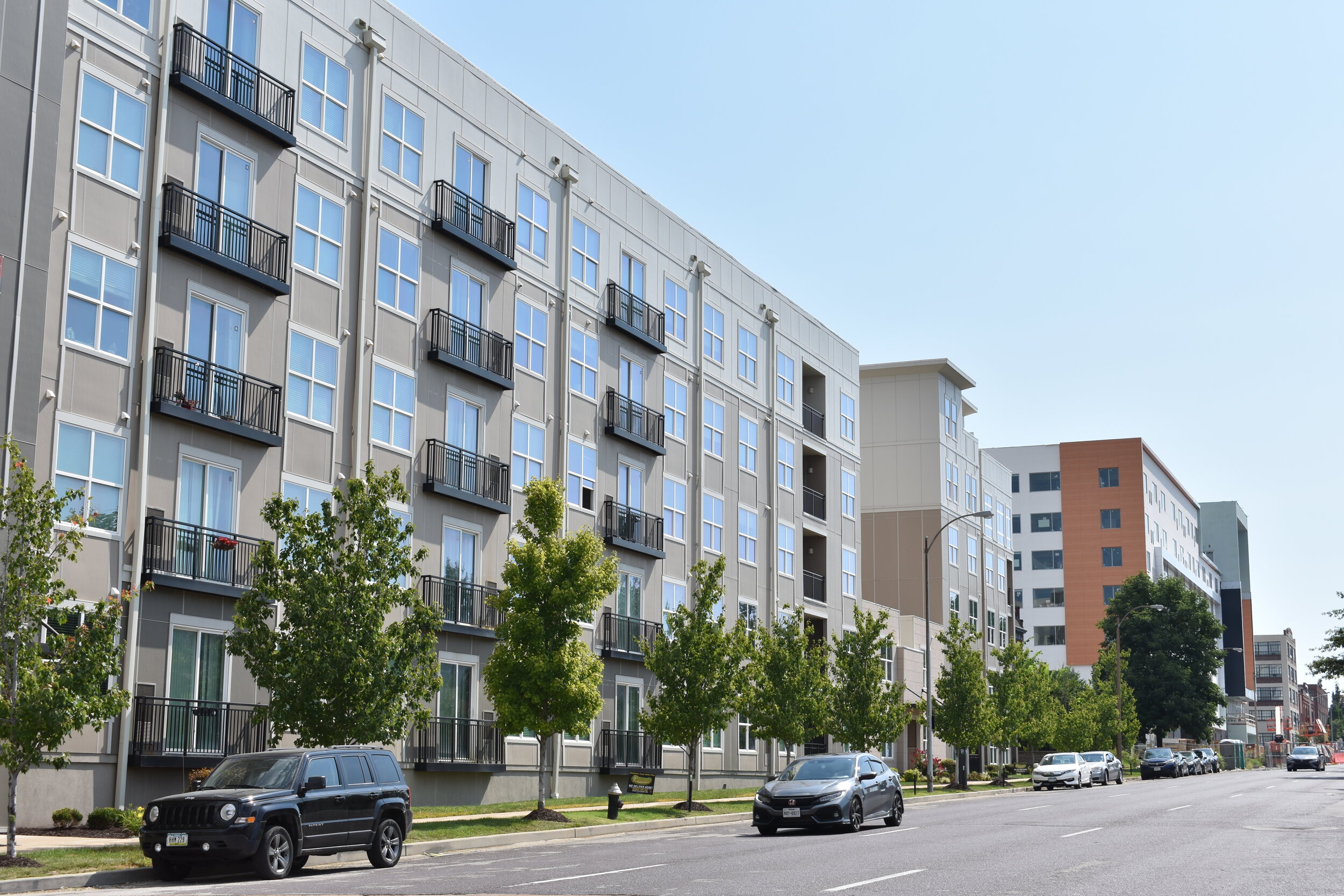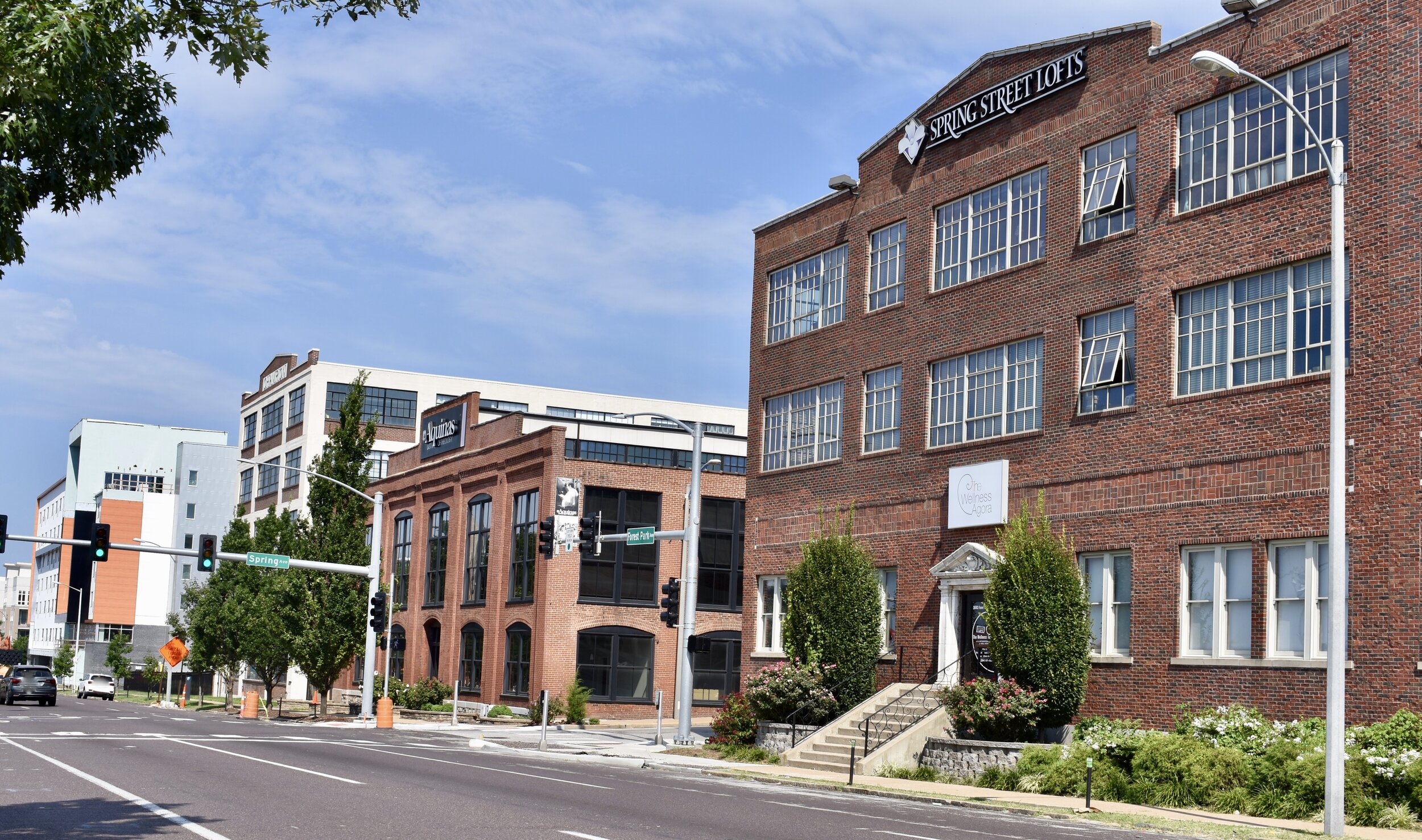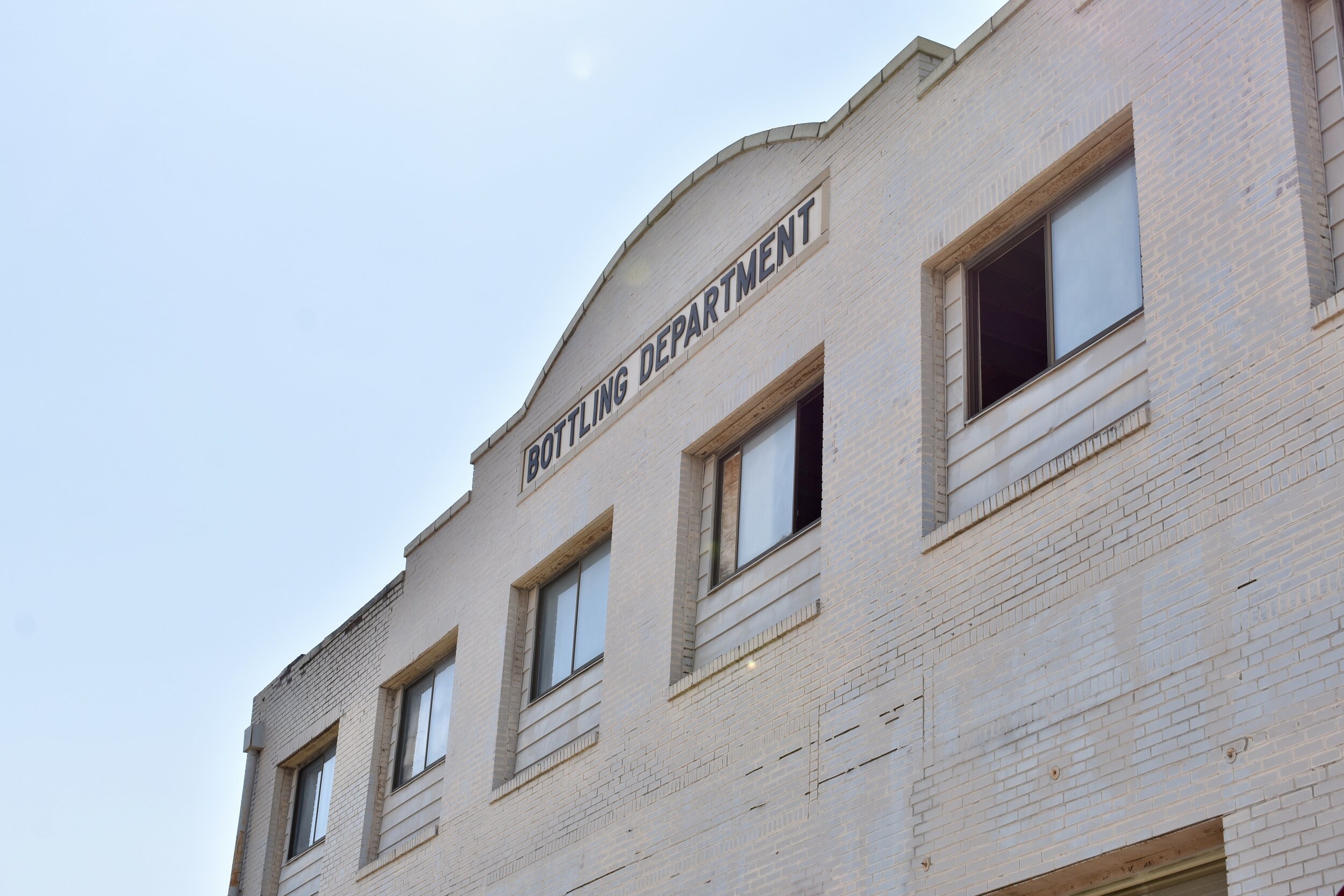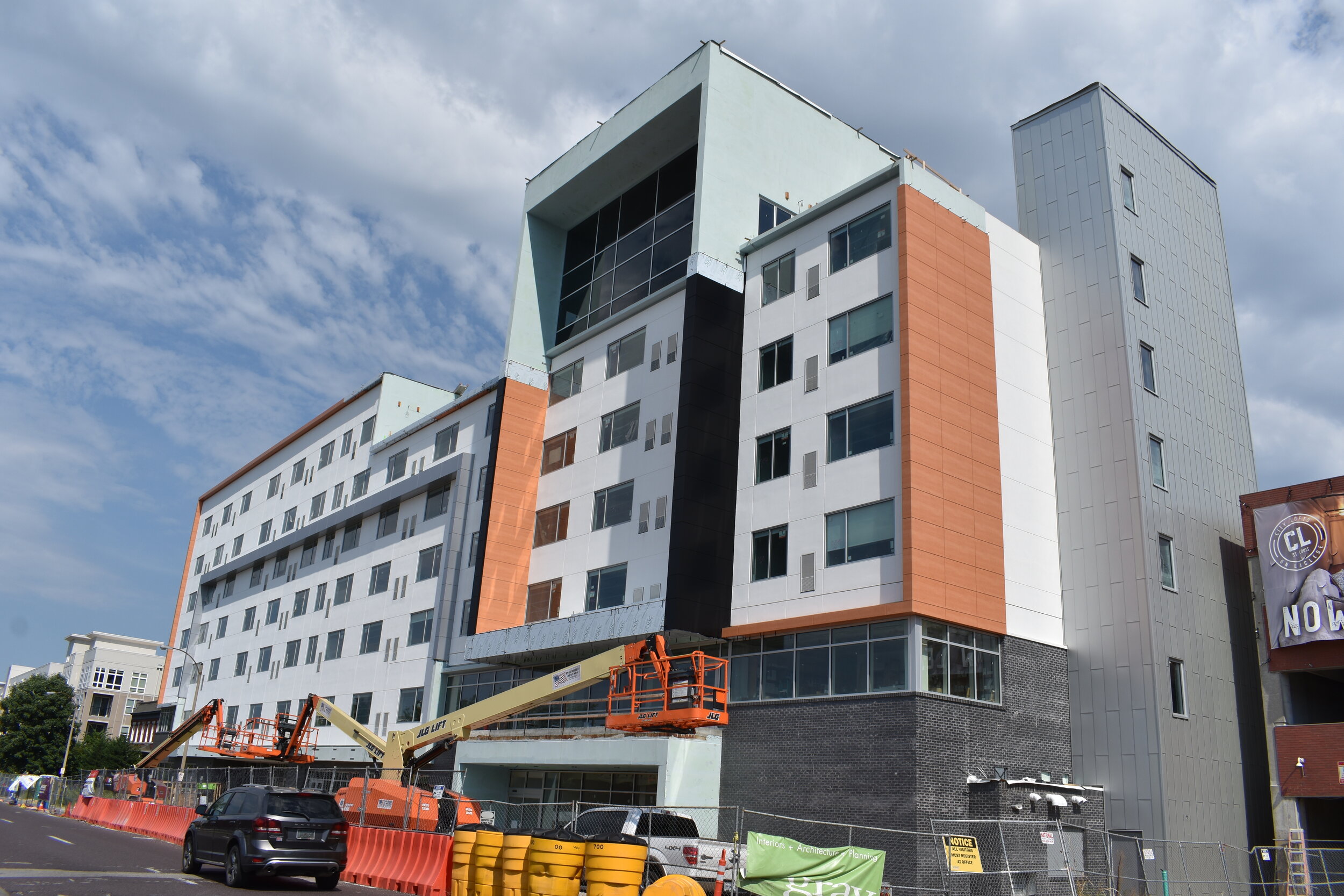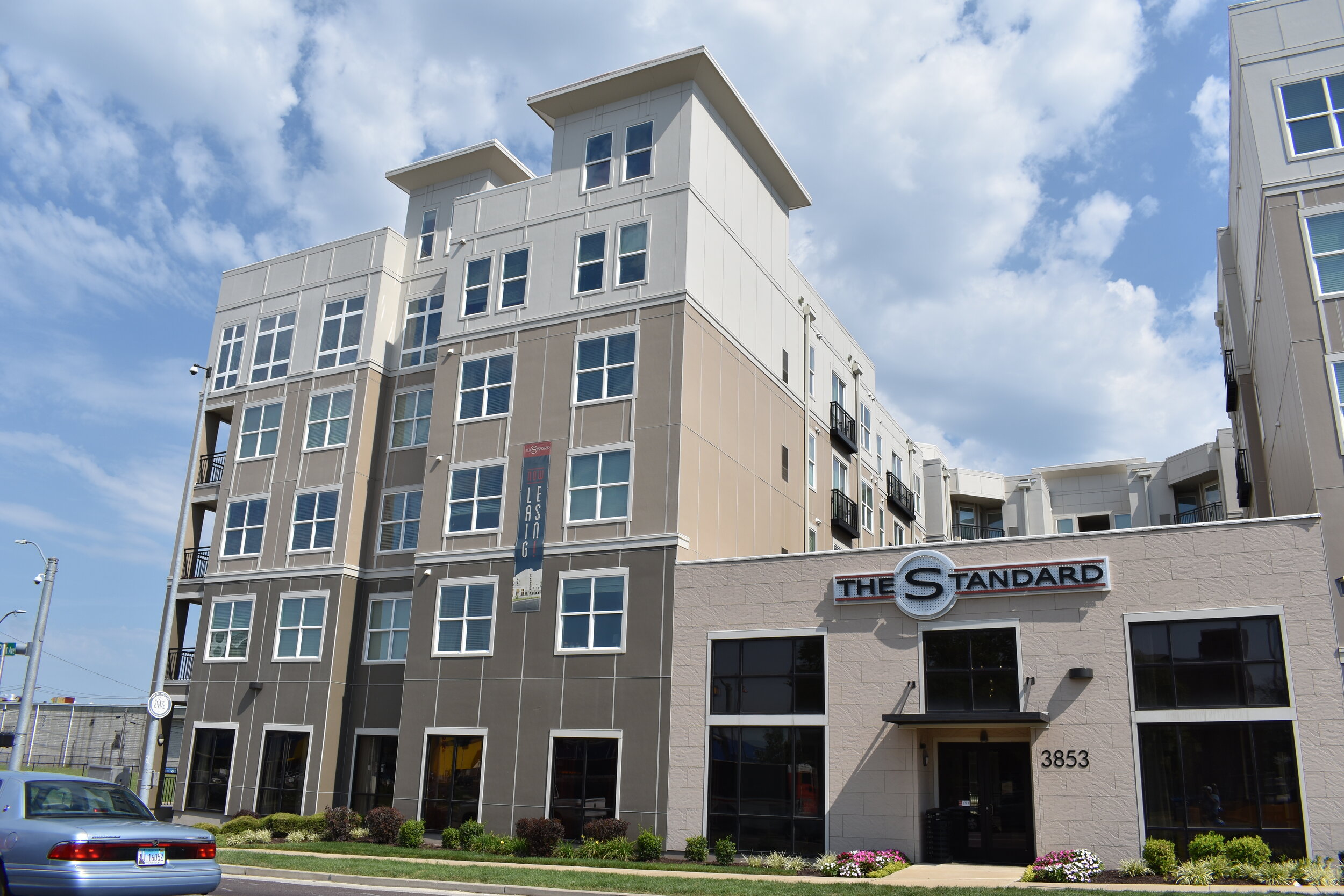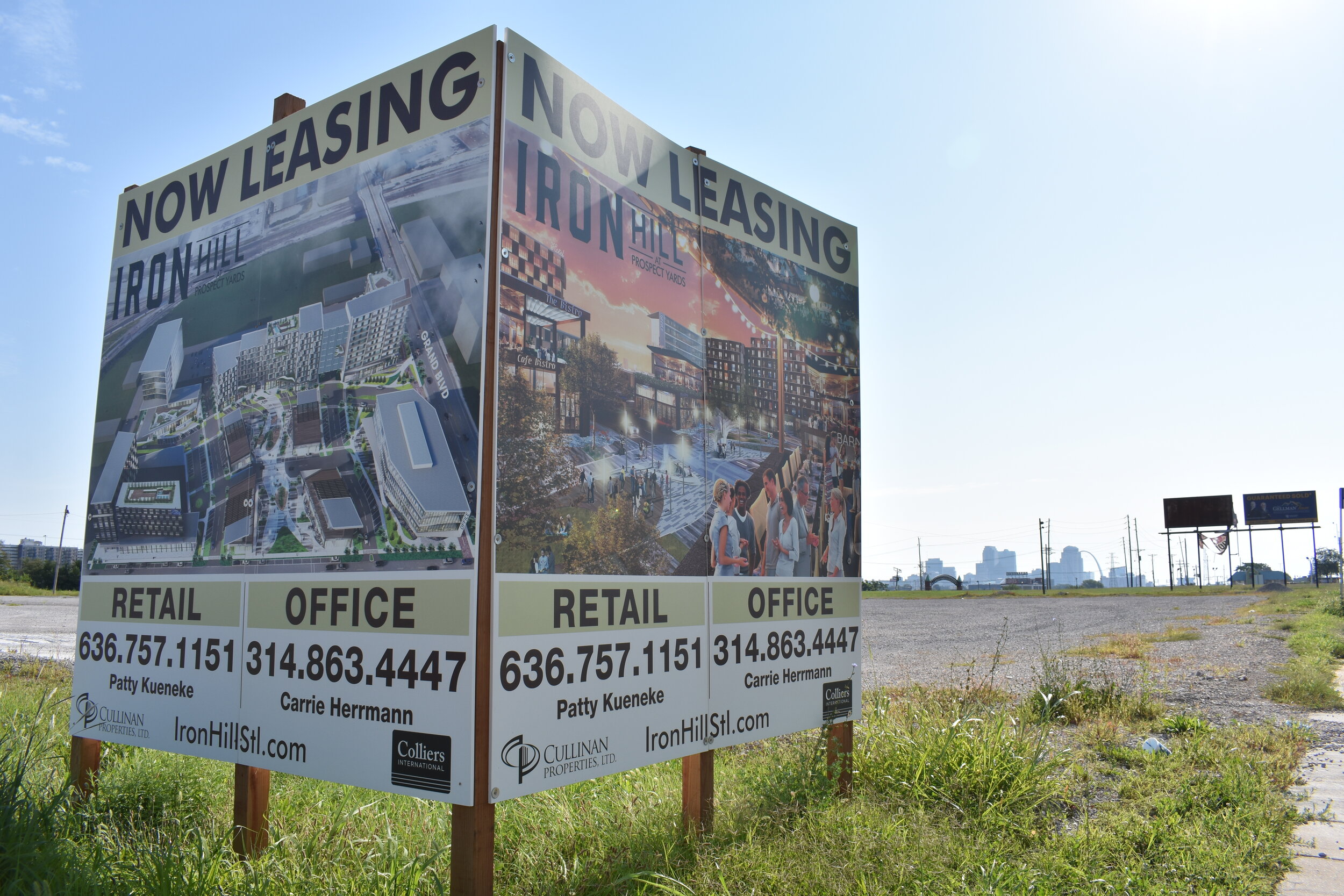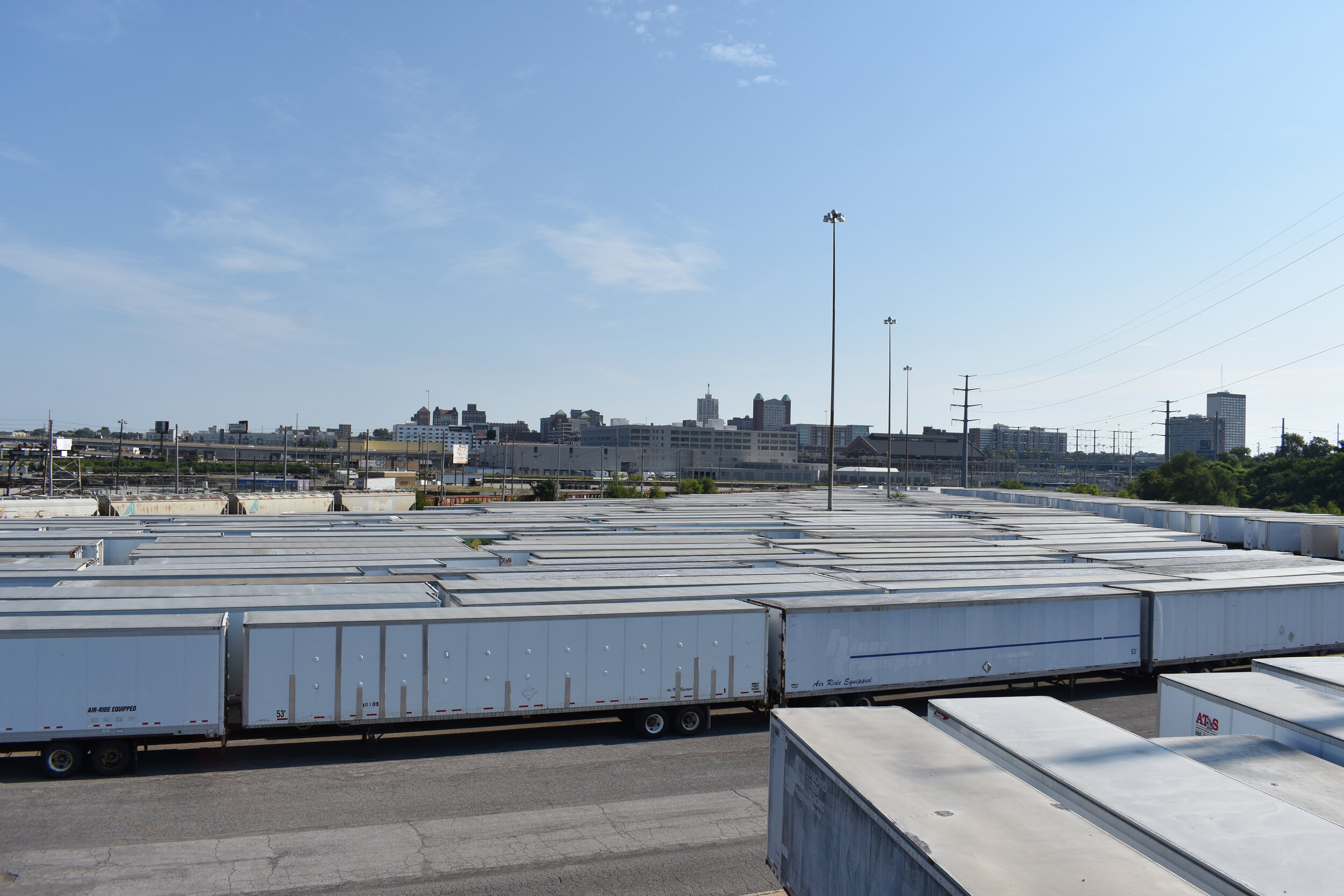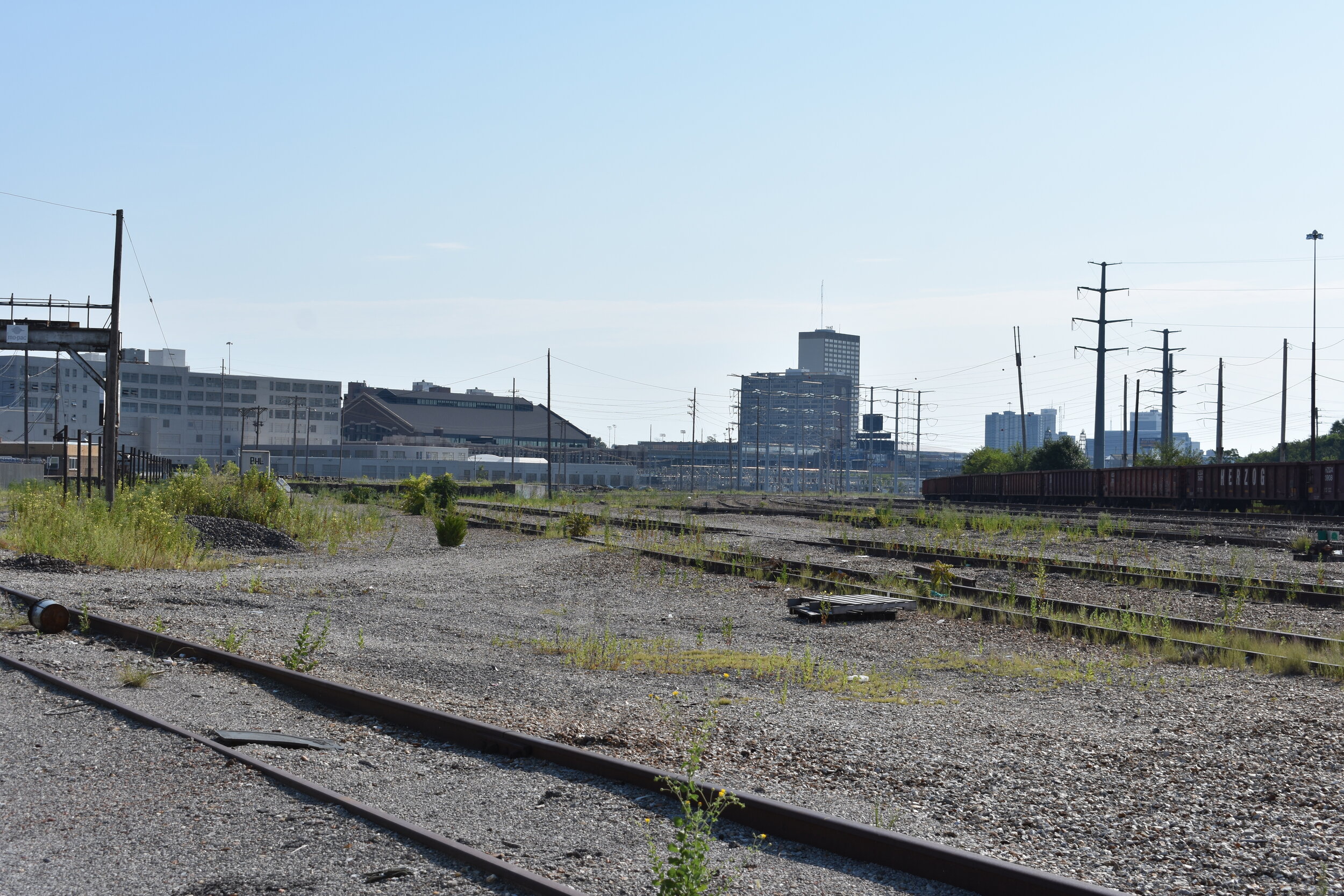The Midtown neighborhood serves as St. Louis' geographic center. It is bound by Chouteau to the south, Delmar and Olive (via Compton) to the north, Jefferson to the east and Vandeventer to the west:
Midtown took a loss of 8% of its residents from 1990 to 2000. In 2000, 4,408 people were counted 65% white, 27% black, a whopping 5% Asian (one of the largest I've seen so far) and 3% Hispanic/Latino. There were 1,532 housing units, with an 81% occupancy rate: 1% owned, 99% rented.
The 2010 Census count was kind to Midtown with a 28% increase from 2000. 5,652 called Midtown home, 62% white, 26% black, 9% Asian and 3% Hispanic/Latino. The near doubling of Asian people is the unique story of Midtown’s last ten years.
The 2020 Census counted 6,862 residents, another 18% gain! Racially, it is 48% white, 35% Black, 10% Asian, 4% 2+ races and 3% Hispanic/Latino. 474 housing units were added with a 85% occupancy.
As you can probably conclude from the above number, the residential base of this neighborhood is largely made up of the student population at St. Louis University. There are some homes on Westminster Place in the northwestern corner of Midtown, but I wouldn't be surprised if these were owned or affiliated with the university as well:



The southern part of the neighborhood is largely railroad tracks and former industrial sites. Some light industry still exists including Andy's Seasoning, Villa Lighting and many other service related companies. Here are some shots of Midtown south of I-64:






The Coronado is one of my favorite Midtown structures:



There aren't that many single family homes here. The original street grid you see north of Olive has some, what appears to be, public housing or otherwise non-descript suburban apartment complexes. Who thinks this is okay to drop down in the middle of a city?


There are more residential options developing in Midtown in 2010 then there were in 2000, as evidenced in the G.W. Lofts on Washington and other apartments above businesses that are springing up all over Locust and Olive.

The Midtown stretch of Locust and Olive has been branded "the Midtown Alley" between Jefferson and Grand. This is a very exciting area with a lot of potential to connect Downtown with Grand Center. Lindell already serves as a nice link between Grand Center and the Central West End.






Formerly St. Louis' "automotive row", Locust was where St. Louisians built and bought cars from the 1800's throught the second world war. There is a great story by Patrick Murphy that channel 9 aired back in 2005. This area is being converted to retail, residential and entertainment. The buildings are amazing and I hope to see this area continue to flourish. There a many places along the Midtown Alley that you should visit. The Good Pie is home to some of the best Neopolitan style pizzas in town. The ingredients are fresh and the pizzas are fired at 850 degrees in a hand built oak wood burning oven.I know the ingredients are fresh because we were walking into the Good Pie one evening and we passed the rear of the building where there were fresh herbs and veggies growing in raised beds just outside the restaurant. Doesn't get much more fresh than that. Other places you need to check out are the U deli, home of one of my favorite sandwiches (salmon pesto club on ciabata) in town, Pappy's Smokehouse which is only rivaled by Shaved Duck when it comes to southern style smoked meats and sides, and there is also the Buffalo Brewing Company microbrewery and pub. These 4 businesses are all concentrated along the 3100 block of Olive:



The Fountain on Locust is one of our favorite places to take the family for ice cream. They have a great building and offer some of the tastiest ice cream in town; it will remind you of an old fashioned ice cram parlor complete with a bar. The menu includes a world's smallest sundae and ice cream cone, very popular with the little ones. There are many other businesses within the Midtown Alley: Arch Taekwondo, the EXO nightclub, a women's clothing store, Fubar, etc. This is one of the most exciting areas in town. I hope to see much more residential available above the businesses and around the Locust/Olive alley. If a business district is successful, it will need foot traffic from locals as well as students and visitors.


The Midtown Alley is well on it's way, but I'd say the majority of the buildings are still looking for new uses:

Don't you love these art deco 1930's police stations that are sprinkled throughout the city? There is one on Hampton just south of I-44 and this one is on Samuel Shepard Dr. in Midtown:



The Scott Joplin house exists within Midtown:

Joplin only lived in St. Louis for about 7 years, but this is where he created some of his best works. One could argue that his days in St. Louis were not amongst his personal best due to the loss of his baby daughter, a divorce and the death of his second wife in 1904 only 10 weeks after their wedding. He came to STL in 1900 and left for New York in 1907. Source
There are many, many opportunities for infill in and around the north east portion of Midtown. Empty lots surround the aging beauties:

I've yet find a St. Louis neighborhood without an eye catching church:


Random interesting buildings:










The Armory that sits just south of I-64 used to be a federal building and then became an indoor sports complex in the 1980's, now it's abandoned:


But the real story of Midtown is centered around it's largest entity: St. Louis University. This private college was founded in 1818 and has built or assumed some of the most beautiful buildings in the entire city:












If the Bilikens move to the Missouri Valley Conference, I will be in line for men's basketball season tickets at the Cheifitz Arena:

Midtown is also home to Harris Stowe State University:

If you haven't gone bowling or checked out a film at the Moolah, you're missing out:


Another fantastic sign of renewal is along Forest Park Blvd. where the Aquinas institute of theology, Six Row Brewing, the Library Annex and others are doing business:



I gotta put in a plug for the Habitat for Humanity Re-Store on Forest Park that is a place to donate unused or lightly used building materials. You can find some real relics in this place.

You also can't overlook some of the larger employers in the city have set up shop in Midtown including AT&T and Wells Fargo Advisors:


Midtown is an essential neighborhood that is on the rise. It will be the proud link between Downtown West and the Central West End in years to come. As with most St. Louis neighborhoods, the generations from the 1960's to the 1990's neglected and abandoned her; now with the onset of investment in the 21st century, I think we'll see Midtown once again as a destination spot and a healthy neighborhood...and another reason to make you believe that St. Louis is the coolest and most active city to live in!
Some other miscellaneous points of interest within Midtown:








***In August, 2020 I revisited the neighborhood and the following includes updated commentary and photos.***
Misses On Original Tour
Some of the buildings i showed in the original post are not technically in Midtown. Again, I just didn’t have my sea legs on the process. I’ve become better and refined my accuracy, so sorry about that.
I didn’t give enough attention to the section of Midtown that has an intact street grid on the northeast side, especially the sections of Delmar and Samuel Shepard that have been leveled and nearly unrecognizable as a contiguous St. Louis neighborhood, there are still several older buildings remaining.
The art deco former police station has seen no action in the last ten years, but is ready for some love.
But, the infill project, the Lucas Heights affordable housing units (</= 75% median income eligibility) were not done well and the suburban trappings of the strip malls, etc. are not good looks for a city. There is also a lot of fallow ground that has been vacant for well over 10 years.
But, Washington, Locust and Olive continue to rebound with an amazing flurry of rebuilding, rehabbing and property stabilization for future investment. I’ll demonstrate this amazing rebound in the Noticeable Changes section. While not really a miss from 2010, Midtown Alley was just taking off, now it is even more impressive and diverse.
I missed the fact there there are a couple awesome church buildings in the MCM classic Central Baptist and the Washington Metropolitan African Methodist Episcopalian Zion Church, dating back to 1865. Both are quite attractive for their era.
In fact, I make it a point to visit neighborhoods with active black churches on Sundays. My visit today was no exception. The weather was nice and they had the streets blocked off for an outdoor service. They were mic’d up so I got to hear the singing on all my scooter passes in this section. It was glorious.
I can’t believe I missed the 1940 Banneker School. It was recently sold by SLPS to a developer, the same folks rehabbing the Shepard School in Marine Villa. According to CityScene STL, a $3.5M investment will convert the building to 41 apartments. A fantastic win for the neighborhood.
This will add some much needed residential and density to an important part of the neighborhood.
The beautiful building that currently houses Club St. Louis is worth reposting with a better image. I’ll let you google that one to learn more about the club.
And, how did I miss the Heritage House, the midcentury high rise affordable housing tower on Olive? While the mid-century styles usually do not respect the street grid, and provided massive amounts of parking lots, they are still impressive even if they are not good urban design.
Noticeable Changes
Wow, where to start? Midtown had a great ten years. St. Louis University has invested in two new high rise dorms on Laclede adding height and density, strengthening the urban campus feel and mix of campus and non-campus buildings.
More grassy expanses were built upon with the new Interdisciplinary Science and Engineering Building on the campus just southeast of Grand/Lindell.
I’ll never understand why the former Humphrey’s Tavern building sits there unoccupied. Such a high-profile spot, such a wasted space.
SLU remains one of the most beautiful legacy city campuses in the U.S.
The former industrial, railway-heavy section of Midtown that partially covers some of the Mill Creek Valley area has seen improvement. The Steelcote and Columbia Oil rehabs to residential and the continued investment in that area are bright spots.
The Armory continues to make progress and the City Foundry STL is nearing completion. Seeing a new roof and windows on the Armory brings me much joy and hope for the future of some long abandoned areas of the city.
Now we just need more connections and streets for access…I’ll get to that in Future Needs.
Many, many affordable housing projects have gone up in Midtown. Hold your gentrification horses, this is not what’s going on here. Hundreds of affordable units are available in Midtown, especially with the new Salvation Army units and Phyllis Wheatley Apartments, a converted YMCA that brought women and children’s housing who are transitioning from homelessness.
There are also many, many new businesses and rehabs and investments for businesses. It’s mind blowing how much has occurred here, as well as the potential for more rehabbing and rebuilding. The Jefferson Connector, Beaumont Telephone renovation…the Locust, Olive and Washington corridors in Midtown are stunningly beautiful.
Since the original post, businesses have come and gone. Good news is, I think we are seeing an increase in diversity of businesses and uses, one of my favorite record stores moved here and there are two microbreweries, several restaurants and bars, and a heavy creative/design/architectural/marketing presence.
This is really the star of the last decade, so I’ll break photos into 3 categories: beautiful rehabs/occupied buildings, rehabs and untapped/remaining businesses, gorgeous potential and new uses aplenty.
So many beautiful new uses:
So many long-standing businesses and potential for new investment:
So much untapped potential that will and need to see new uses in the next ten years:
I know Forest Park Parkway has a long way to go when it comes to a walkable street, but much progress has been made in the way of urban-scaled buildings. Less gas stations and copious setbacks have gone the way of good urban buildings.
What Are The Future Needs?
Opening Theresa Avenue and Edwin Street from Chouteau to Spruce and Market would do wonders for connectivity. The investment in the Steelcote Loft area is impressive, and these new residents deserve to get around more easily.
A massive mixed-use project called Iron Hill is being proposed at the northwest corner of Grand and Chouteau.
If designed well, this could be a huge step in reconnecting SLU with the medical campus and FPSE to Midtown. Reconnecting streets in the section should be a primary goal of the city. If we give these developers incentives, they need to reconnect our street grid, not cement it in super-blocks.
The uses that have filled in the railroad track sections on the southwest section of Midtown have been filled in with trucking and dead railway operations. These trucking storage operations are best in the suburbs along Interstates. We need to rebuild a city here.
Vandeventer has a decent street wall, that needs access to the rest of the neighborhood and its surroundings.
Infill is the call for Midtown in the next decade(s).
Chouteau can become urban or at least contiguous again, and there is hope even if some older buildings that hold many memories for folks are razed for higher uses.
Chouteau looking west toward S. Grand
Additional St. Louis City Talk Reading
SLU - Will It Be A Good Next 15 Years or Not? - December, 2012
SLU On-Campus Housing - 2016 Development Favorite - December, 2016
The City Foundry - 2016 Development Favorite - January, 2017
Cole Chemical Building - 3721 Laclede Avenue in Midtown - January, 2017
Scooter Ride #3 - August, 2017
The Armory - 2017 Development Favorite - December, 2017
Westin Hotel/Retail Mixed-Use Building in Midtown - December, 2017
SLU Naming Mixed-Use District Near Campus - March, 2018
Forest Park Avenue in Midtown - July, 2018
Steelcote Building Renovation in Midtown - October, 2018
Vandeventer Estates and Deaconess Center for Child Well-Being - November, 2018

